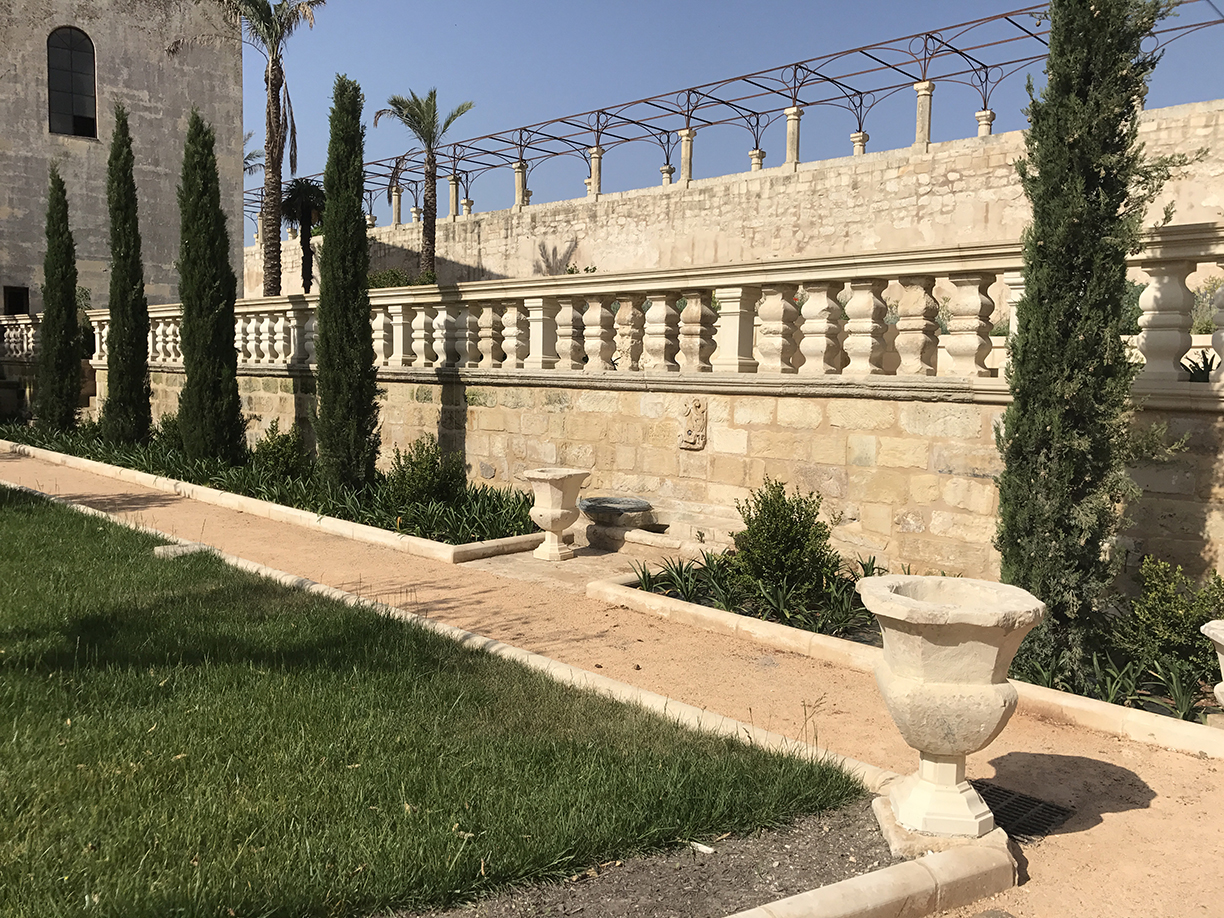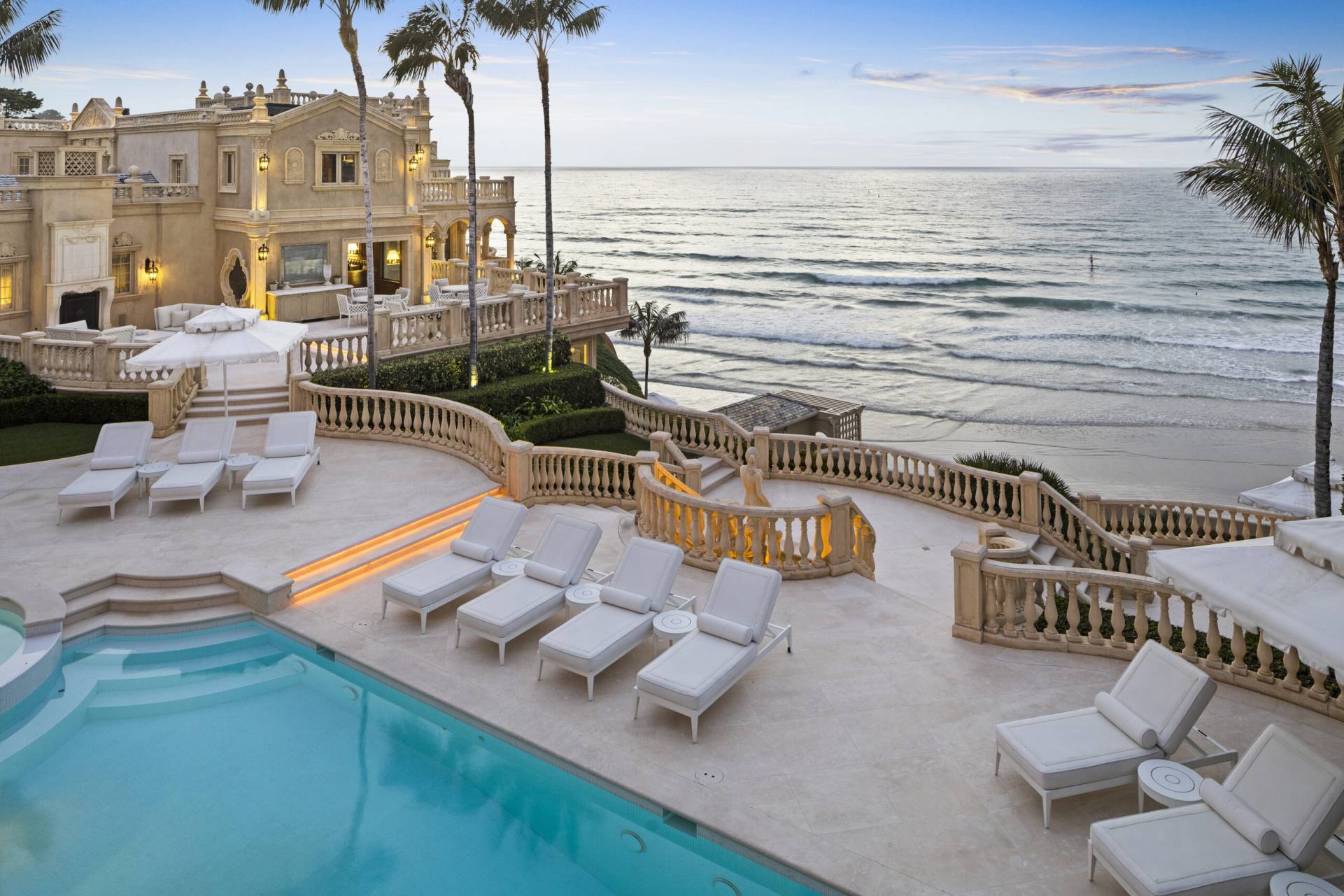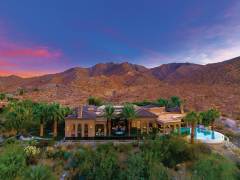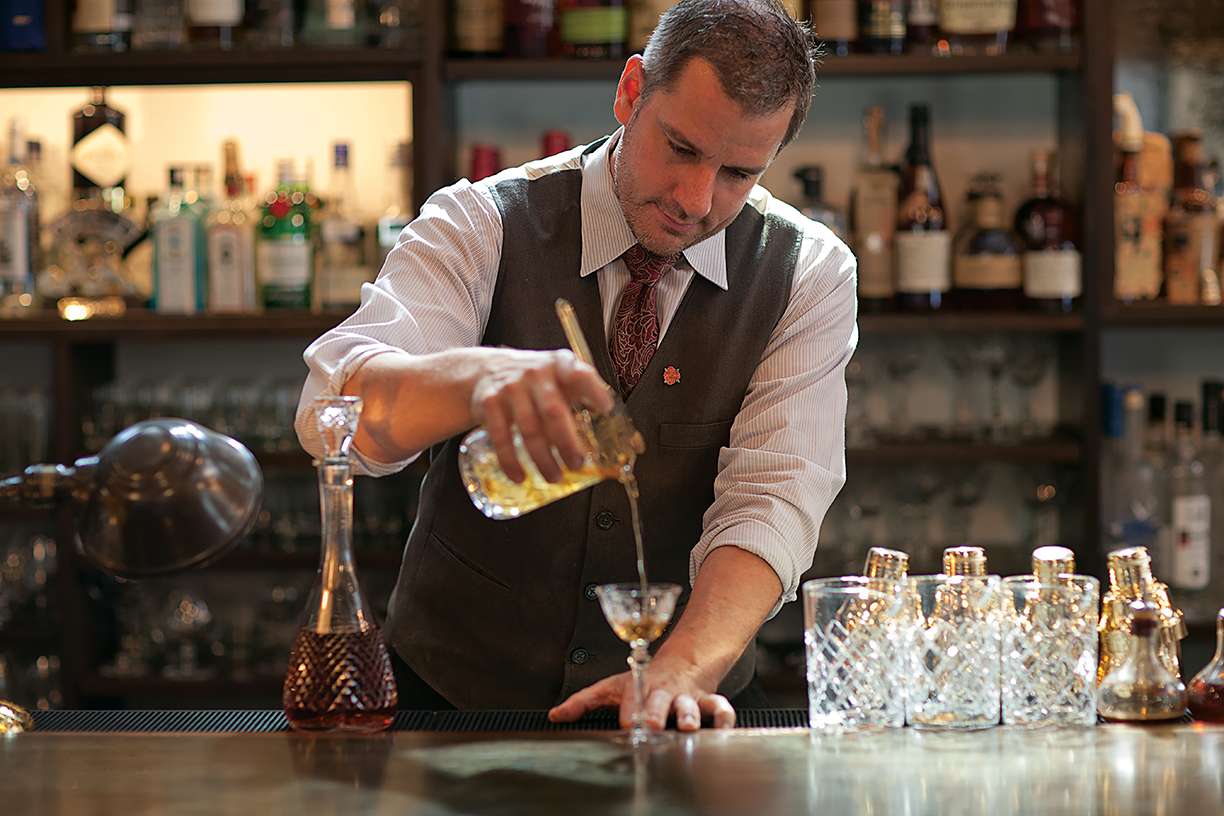
Is any spirit currently trendier than whiskey? Its popularity nationally is reflected in elaborate bars dedicated to its discovery.
The history of whiskey dates back to the 15th century and in America its popularity has endured every beverage trend from flavored martinis to craft beers. As Americans embrace this brown liquor — originally from Scotland but now produced from Bangalore to Brooklyn — as a timeless indulgence, they increasingly patronize high-end whiskey bars showcasing the spirit’s remarkable diversity. In Los Angeles, one of the bars that set the whiskey revolution in motion was Seven Grand and its success led to spinoff s in San Diego, Denver and Austin. Steve White, general manager of the downtown Austin location, reports a current selection of just under 600 whiskeys, but insists that sheer numbers are not what motivates him. “My goal is to have the most curated collection of whiskeys that our bartenders can be proud to put in front of anybody,” he explains.
In addition to rare and exotic varieties like a 21-year Hibiki from Japan or Balvenie Tun 1509 single malt from Scotland, Seven Grand offers Texas-crafted whiskeys, including Garrison Brothers Distillery not far from Austin. White reports that customers are eager to discover local brands — a prevailing trend throughout the food-and-beverage industry — and insists Balcones Dsitilling, another Lone Star State label, is competitive on the world stage. In the back of the original Seven Grand in L.A., an exclusive tasting library called Bar Jackalope pours particularly rare whiskeys and give s regulars an opportunity to rent lockers to store their own valuable hooch.
With its mounted game heads, antler chandeliers and two-story whiskey bar, illuminated in a soothing amber glow, Butcher and the Rye is a popular hangout in downtown Pittsburgh. Owned by classically trained chef Richard DeShantz, a restaurateur whose four establishments have helped fuel a hot food scene in the Stell City, Butcher and the Rye stocks 600-plus varieties of whiskey, including more than 350 bourbons. Meanwhile, the kitchen offers specialties like beef tartare with black garlic aioli and truffled egg, duck liver pâté with Sauternes gelée, panseared halibut, and buttermilk-fried rabbit.
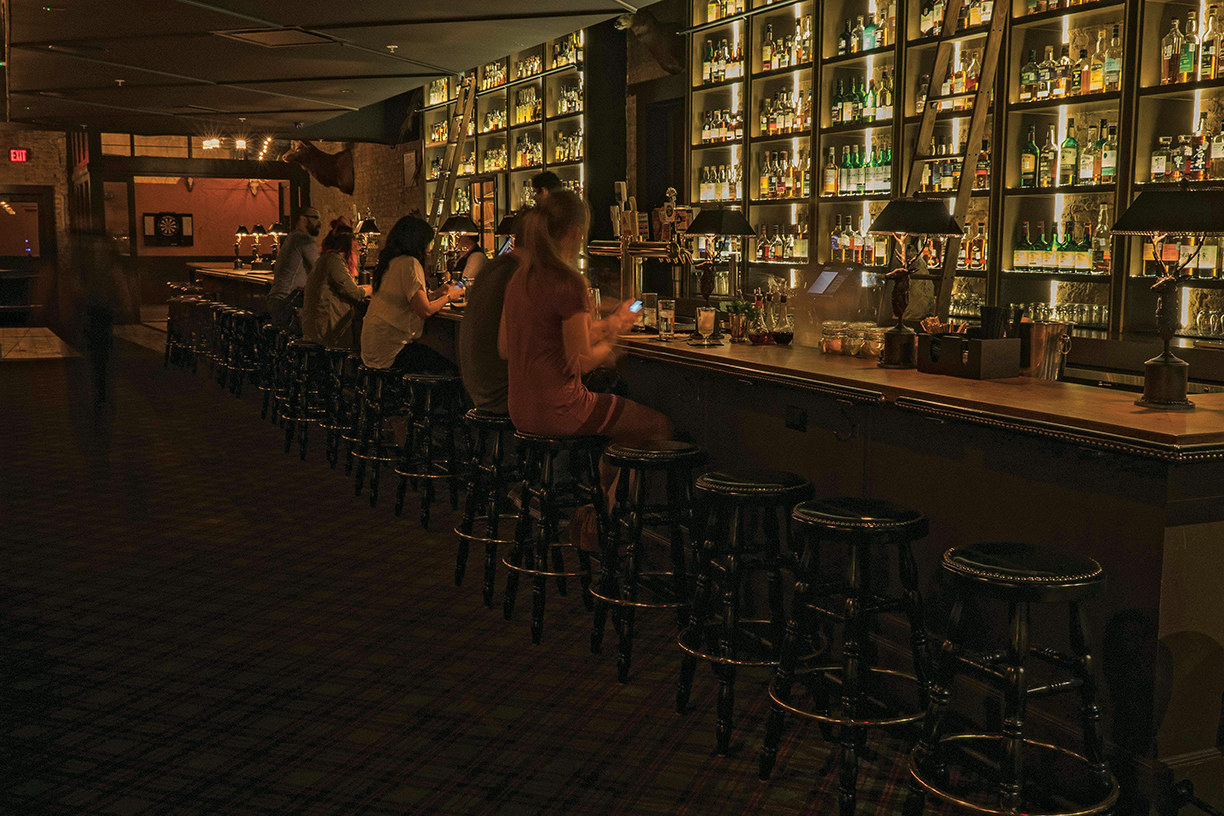
Canon in Seattle boasts America’s largest spirit collection (4,000 labels and counting), with whiskeys consuming about 150 pages of the 191-page Captain’s List. “We have a very fiite amount of space and when it’s completely consumed that will be our number,” says proprietor Jamie Bourdreau of the lists’s upside potential.
Reluctant to express personal preferences, the Seattle whiskey authority quips, “Whenever someone asks me for my favorite it can usually be translated to, ‘What should I drink or order?'” Bourdreau explains, “The proper reason to that question, in my humble opinion, is: ‘What are you using the whiskey for, what time of day, time of year, what have you enjoyed in the past, and what’s your budget?”
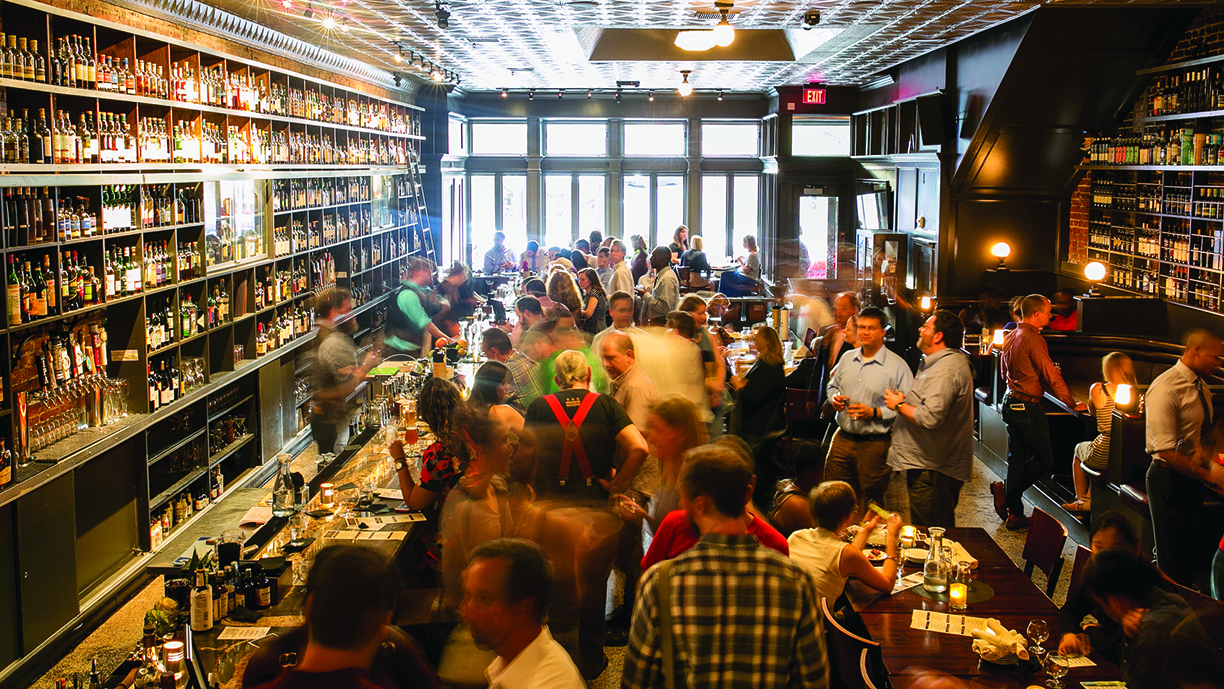
Canon’s list includes many century-old whiskeys priced in the stratosphere, such as a 1898 Canoe Club ($1,225 per pour).
Cocktails — many are memorialized in “The Canon Cocktail Book” authored by Boudreau — include classics like Sazerac and Champs Élysées, multiple mules and creative originals. “I enjoy classics and their history, but have an equal passion for coming up with new combinations and presentation styles,” reports Boudreau, who in spite of his mixology expertise insists Canon is much more than a bar. His kitchen turns out inspired dishes like seared foie gras on pain perdu with cocoa nib “soil,” sweetbread nuggets with agrodolce and barbecue sauce, and duck cassoulet.
Las Vegas’ The Whisky Attic claims to maintain the greatest whiskey collection in America, and whether or not that is actually the case, this off-the-Strip venue is certainly one of the best places to learn about different styles and explore new labels. Various tastings are offered by appointment only, and whether a customer’s interests lean toward Kentucky, Scotland or Japan, the Attic’s approximately 1,800 bottles provide fertile grounds for discovery.
As politics is often enough to drive anybody to drink, it should be no surprise Washington, D.C. offers several outstanding whiskey bars. The Next Whiskey Bar is ensconced in the historic Watergate Hotel, part of the property’s recent $125 million renovation. The space features curvaceous floor-to-ceiling shelving displaying 2,500 custom-made whiskey bottles, all dramatically and sensually illuminated.
Among the selections at The Next are a 23-year Pappy Van Winkle ($500 per pour), 25-year Macallan ($300) and 18-year Yamazaki Mizunara 2017 ($650), all excellent options for lobbyists with unlimited expense accounts. But there are whiskeys for everybody at The Watergate’s chic watering hole. “We’re shaking off the ‘appeal to only older men’ mentality,” says the hotel’s assistant food-and-beverage director Chad Gentile, insisting whiskey is a versatile ingredient that appeals to a diverse clientele. “We host men and women in their late twenties to more venerable guests wanting to relive the vivacity of the period,” he says of the capital’s cocktail culture.
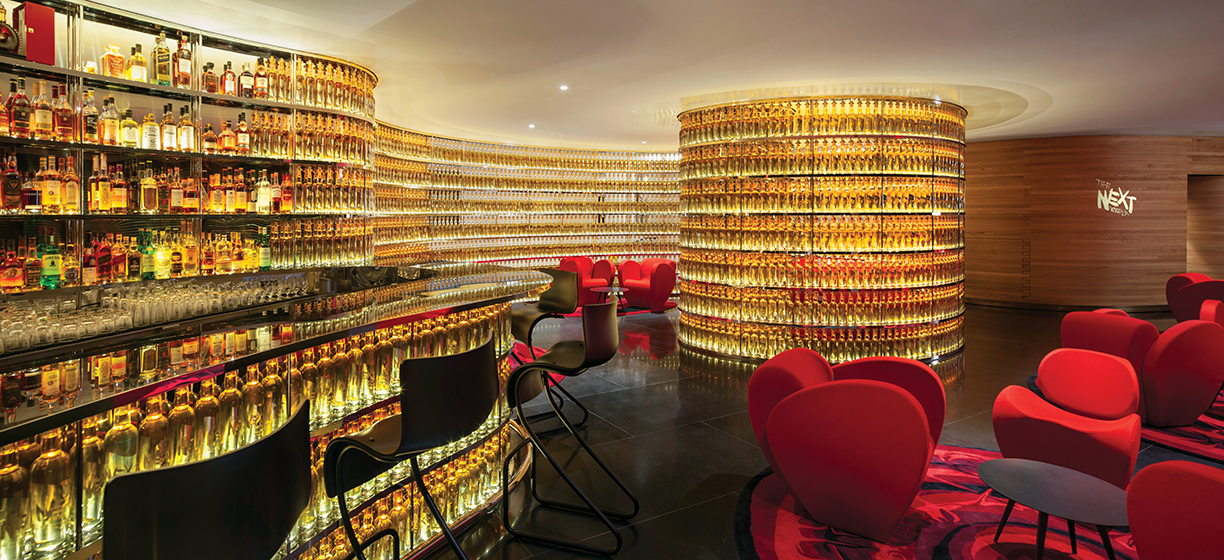
Also in D.C. is the more traditional-looking Jack Rose Dining Saloon, where candlelit tables beneath a tin-stamped ceiling are enveloped by shelves containing approximately 2,700 bottles of whiskey for sampling. With 10,000 bottles a year sold by the dram, owner Bill Thomas is confident his establishment dispenses more whiskey than any bar in the world. Suggesting a demand for quality is driving the popularity of the spirit, he reports, “In the early- to mid-2000s people started paying attention to what they were consuming.”
Jack Rose Dining Saloon presents a sophisticated menu that extends well beyond whiskey-habanero wings to include ginger-glazed pork belly, scallops with black trues, and steak in peppercorn or blue cheese sauce — generally hearty fare that stands up to whiskey. Popular with diplomats, members of Congress and professional athletes, Thomas says of his diverse clientele, “On any given night a guy in a hockey jersey might be seated next to a Saudi prince.”
With the last few weeks of summer ahead, now is the perfect time in much of the country to embrace the warm summer days and spend time in the sun. A perfect outdoor dining area can allow you to spend more time with family and friends and soak in the sun at the same time. Here are a few tips to design the area that will best work for you and your home:
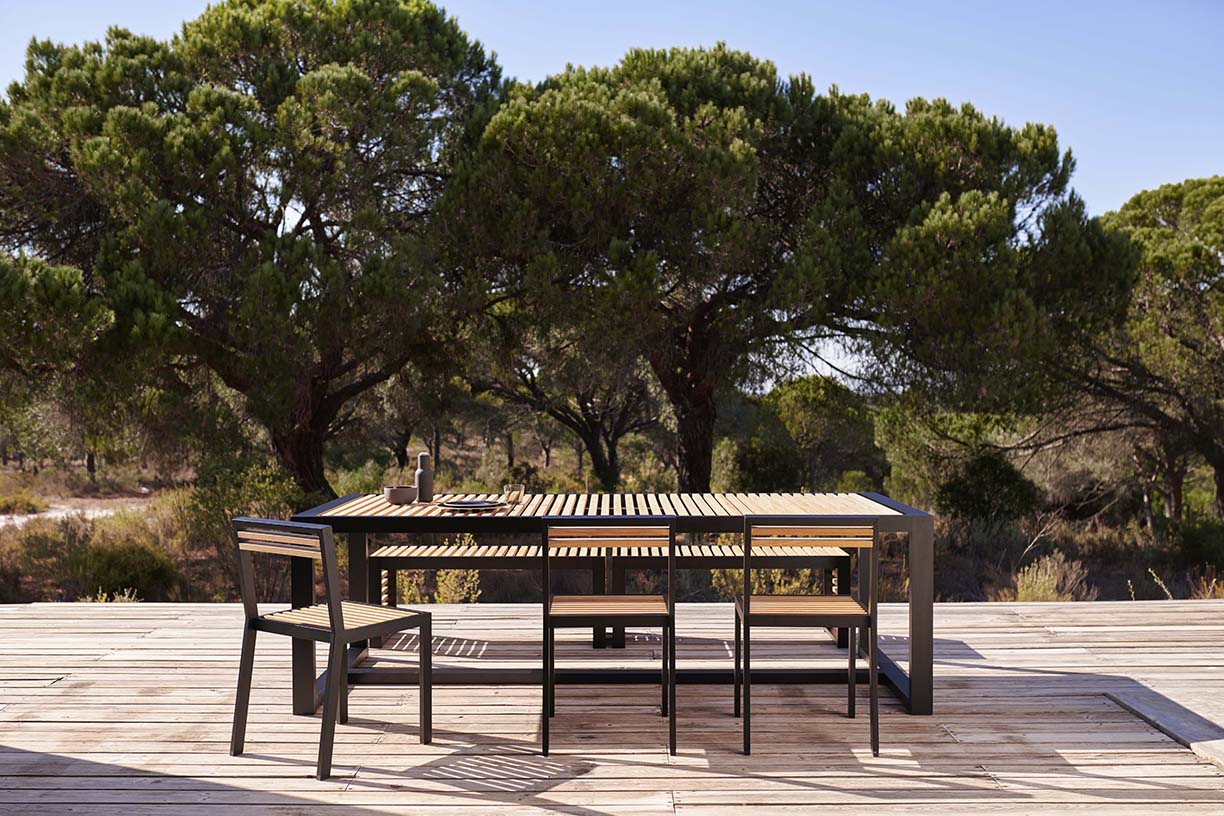
Photo courtesy of Chaplins Furniture
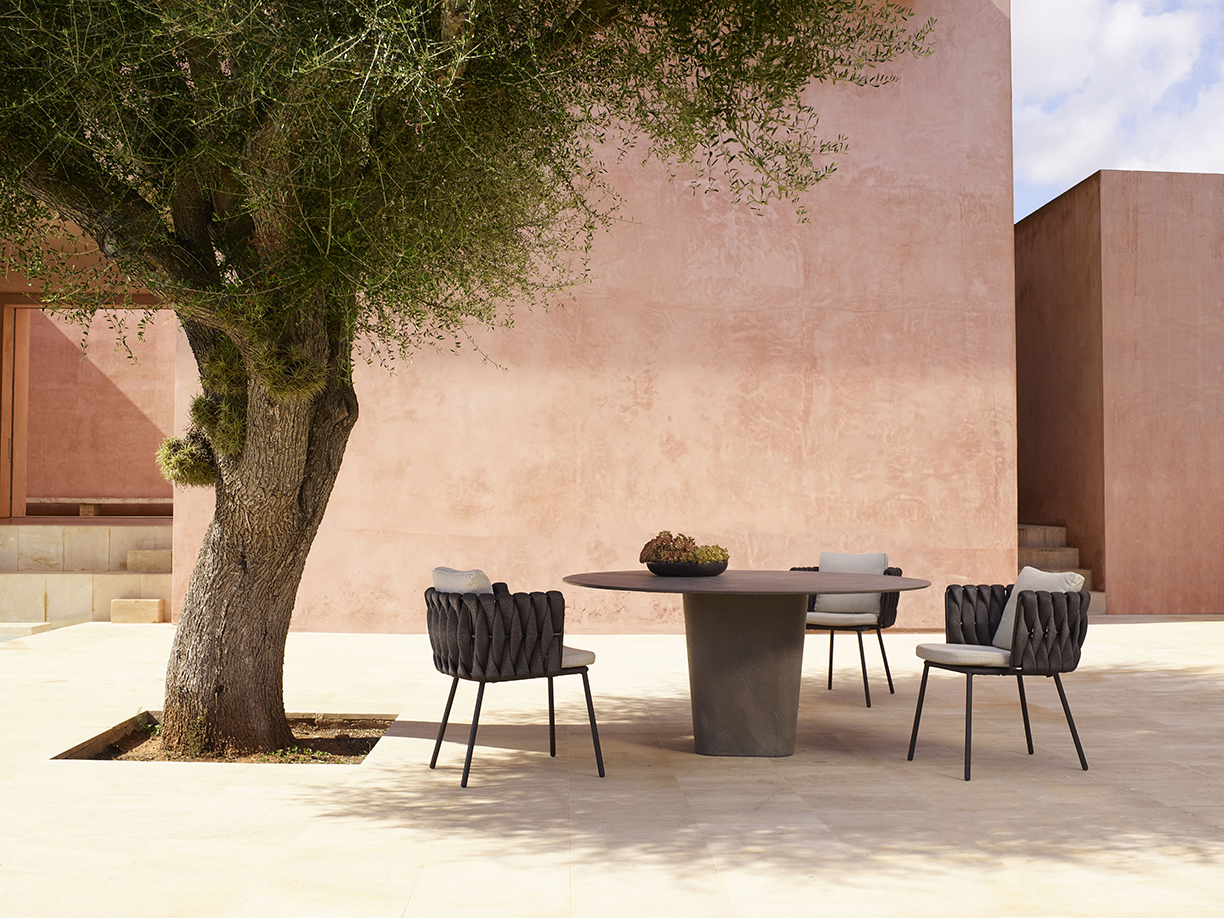
Photo courtesy of Go Modern
1. Consider the Colors
It’s always important to take into account the colors of the outdoor area. If the outdoor area is more centered around nature, consider more earthy colors that blend right into the background, creating a soft, calm atmosphere. For a bolder style, however, pick a color that contrasts sharply against the background.
With this area, the lighter pinks and tans behind the dark table and chairs create a beautiful distinction of colors. Whichever your style, make sure to consider various colors in your design process.
2. Working with the Landscape
When working with nature, there are mainly two choices: working with the land or changing the landscape to fit your needs. Keeping the land untouched will allow for a more natural atmosphere, while changing the landscape may be more accessible and practical for an outdoor dining area.
For example, this bench by the pool allows a great lunch or dinner with family and friends. While nature is not emphasized, it creates a sleek, clean design that’s easily accessible to the house and pool, allowing for gathering around the table at any time.
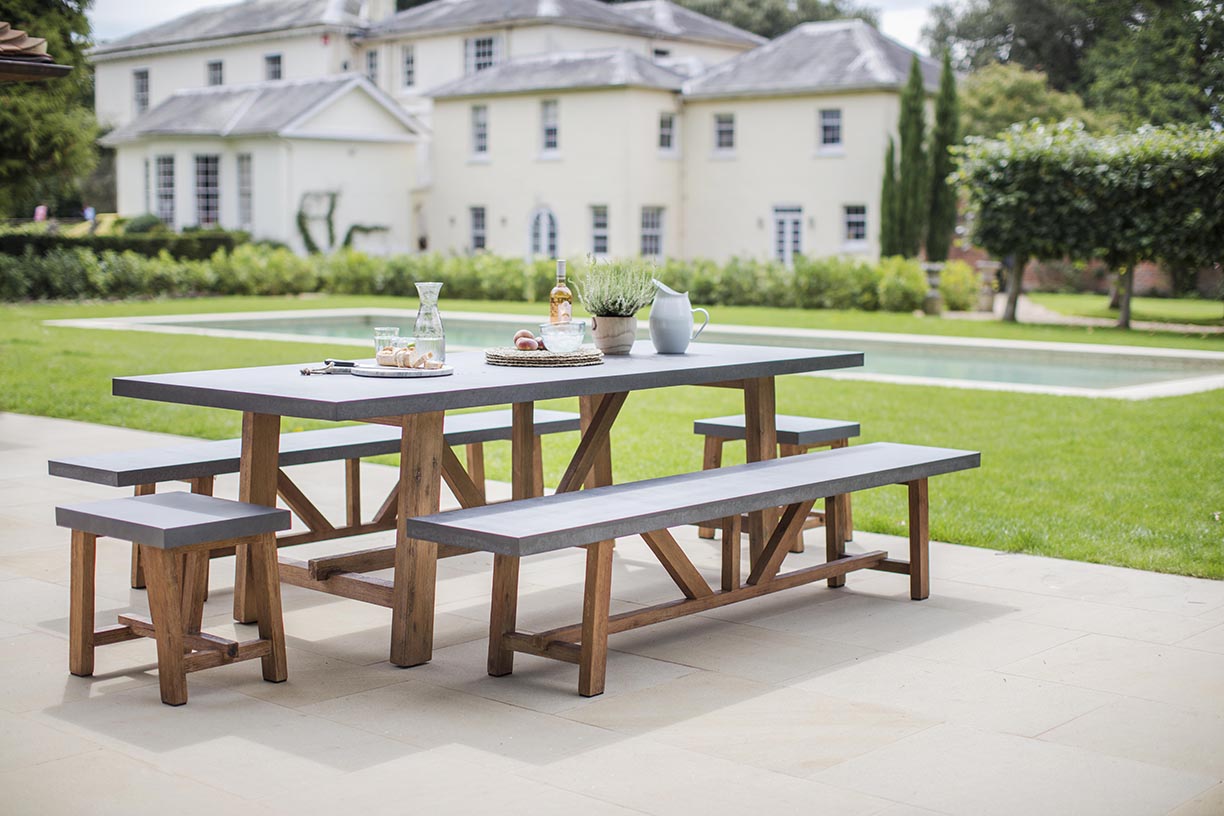
Photo courtesy of Garden Trading
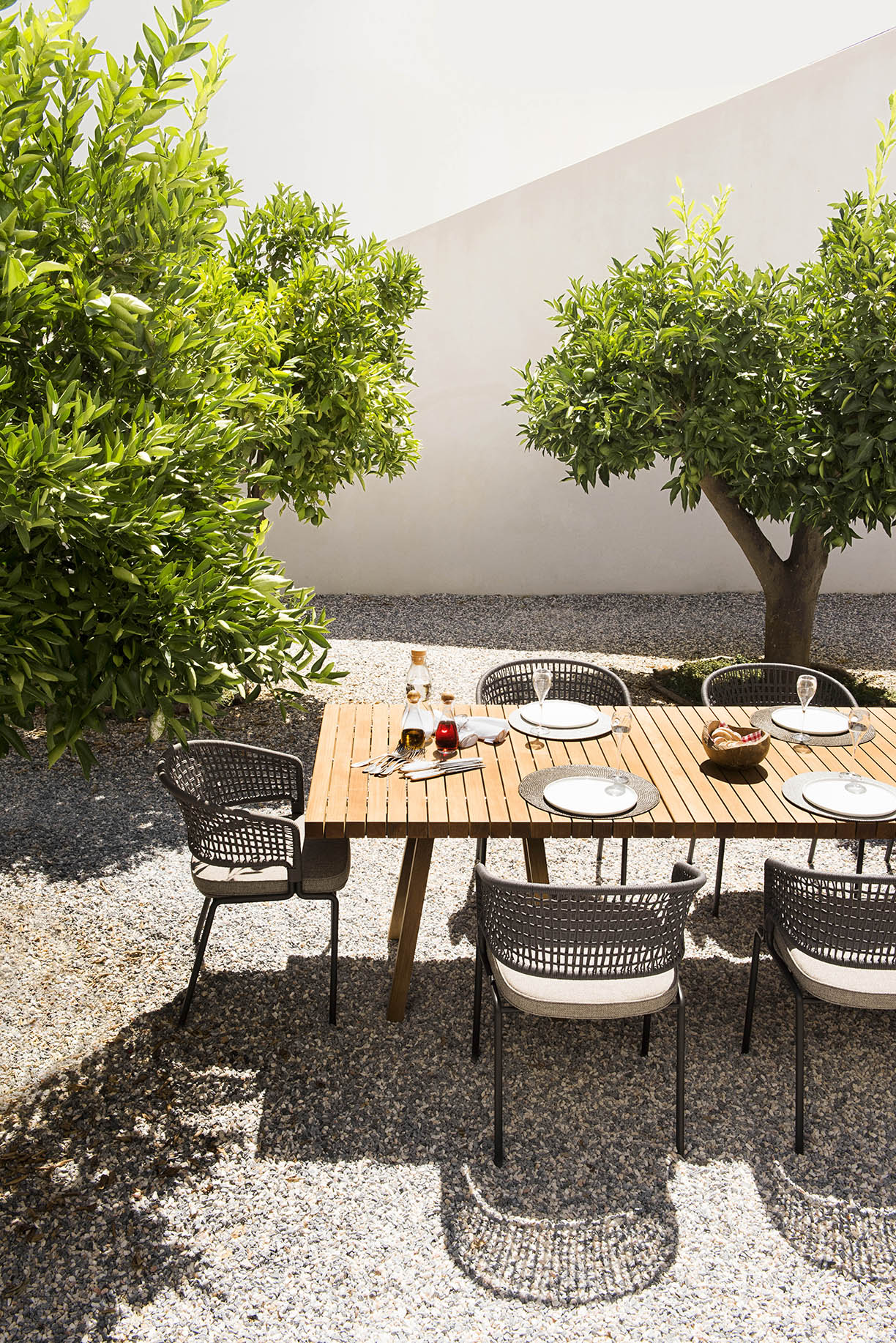
Photo courtesy of Go Modern
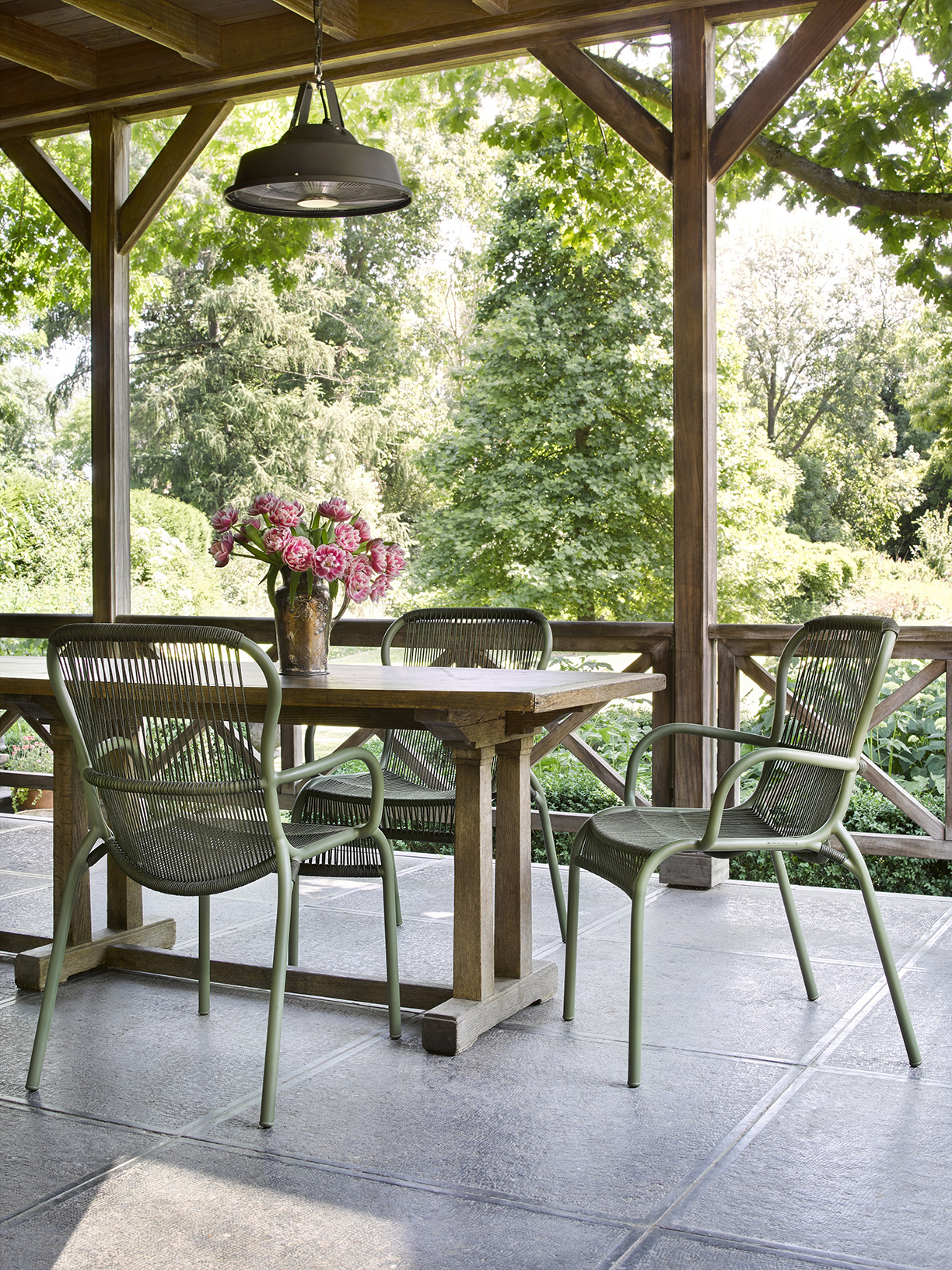
Photo courtesy of Lagoon
3. Creating Shade
While the idea of an outdoor dining area underneath the bright sun is important, practicality should always be a factor. With the sun out all day, it may get too hot to stay outside and enjoy the summer air. Remember to provide adequate shading, whether that’s with a tree or a canopy, so you and your guests are able to spend as much time outside as you would like.
This outdoor dining area was built with a roof for this exact purpose. Crafted with natural wood, it forms a calm atmosphere blocking the sun but keeping everyone close to the nature that surrounds them.
4. A Style that Fits You
Whatever the design, make sure that it fits your personality and will be used often for gatherings of family and friends.
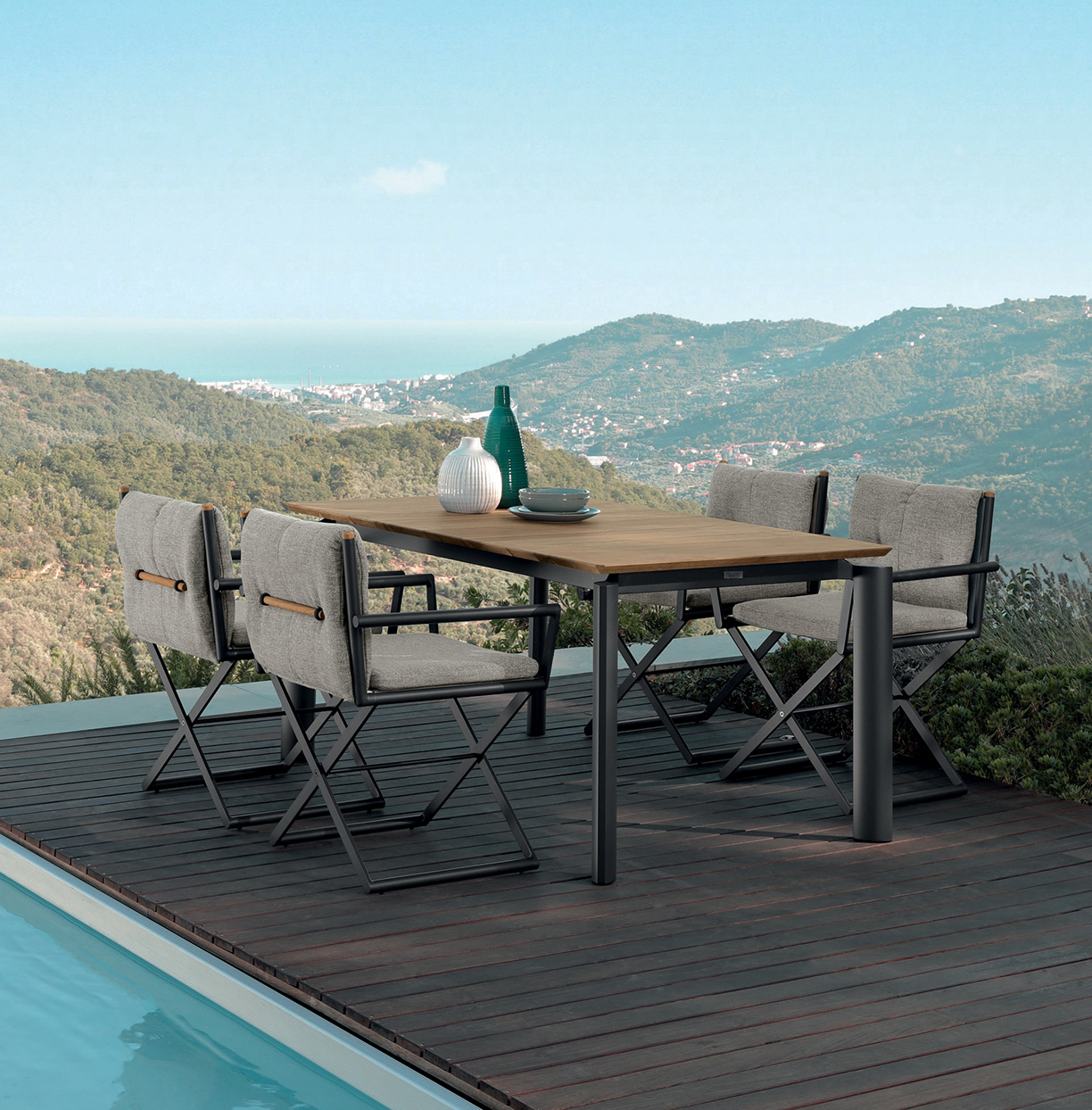
Photo courtesy of Lagoon
With more than 65 years’ experience between them, Sheryl Chinowth and Lee Cohen, co-founders of Chinowth and Cohen Realtors, have proven to be leaders in the luxury real estate industry. Their experience has granted them the Lifetime Achievement Award at the Who’s Who in Luxury Real Estate (LRE) Fall Conference, being held in Washington, D.C., from September 24 to 27.
Their firm has received several recognitions since its establishment in 2004, including ‘Best in the World’ Real Estate Company by Tulsa World readers in 2015 and 2016, along with ‘Best of the Best’ Real Estate Company in Tulsa by readers of Oklahoma Magazine for six consecutive years.

Photo courtesy of Luxury Real Estate
Awarded twice annually to a longtime member of the LRE® network, the recipient of this prestigious award is selected by virtue of their outstanding peer recognition, relentless hard work and commitment to the real estate industry.
“Sheryl and Lee have grown one of the most successful real estate firms in the country. They are respected in the industry for their professionalism, hard work and commitment to their community,” said Who’s Who in Luxury Real Estate Chairman John Brian Losh. “It’s been an honor to call them friends and colleagues over the years.”

Photo courtesy of Luxury Real Estate
Along with being distinguished as a Top Realtor ranking in the top 3% nationally and top 1% in Tulsa County, Sheryl serves on the esteemed LRE® Executive Committee. She has previously received the LRE® Extraordinary Philanthropy award in 2013 for her commitment to giving back to the community.
Lee is currently active in the Greater Tulsa Area of Realtors (GTAR) RCA Committee, Legislative Committee and RPAC Committee. He is also a member of the Oklahoma Association Realtors Finance committee as well as a member of the REAL Trends Leadership Council.
With a sleek, modern style becoming the new trend in home design, chandelier makers are turning from the traditional designs to modern light fixtures instead. Not only do they add an elegant and modern piece to the room, but they’re becoming pieces of art in their own right.
The creativity that goes into designing and manufacturing these modern chandeliers is pushing the boundaries on the line that constitutes furniture and works of art. With that said, here are some tips on choosing which modern chandelier is best for you:
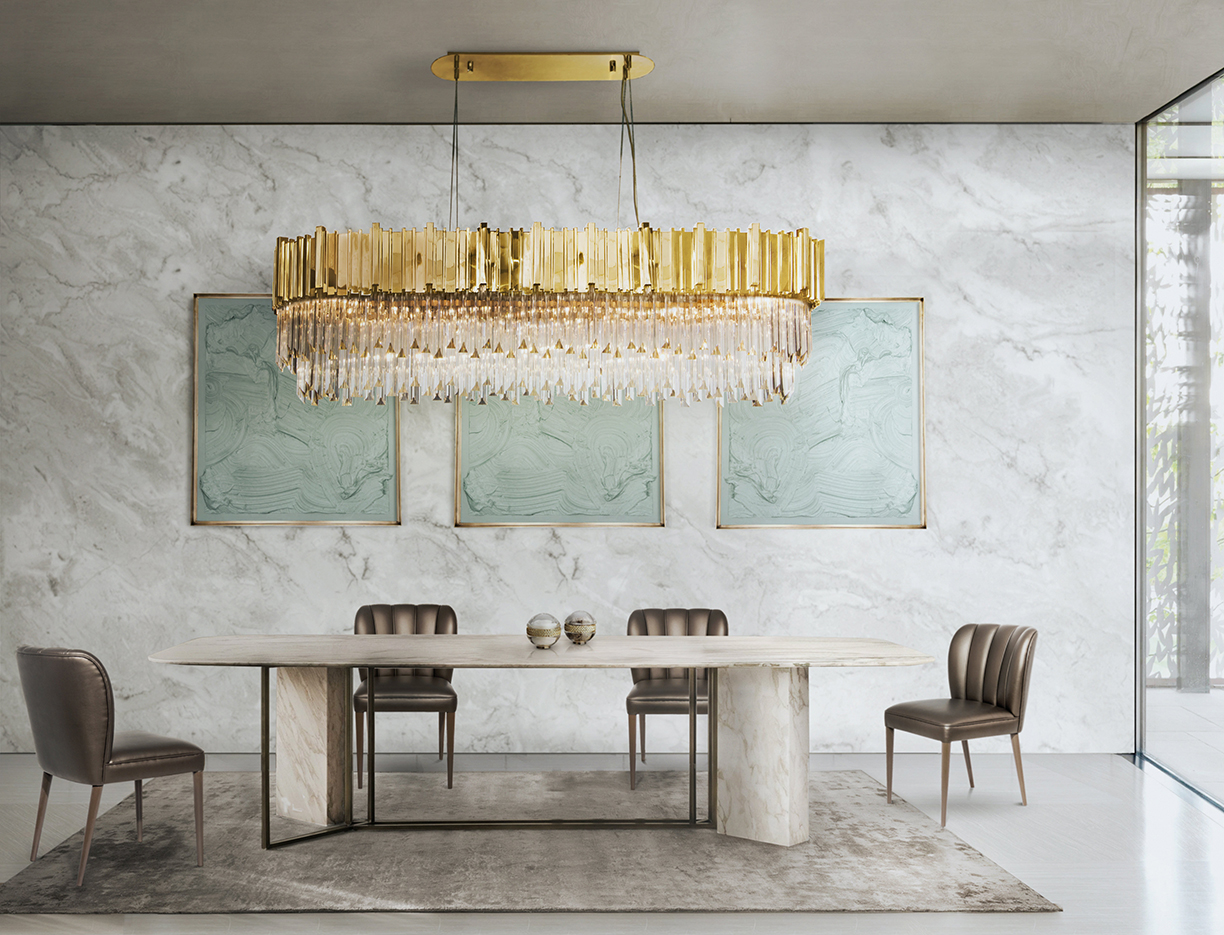
Photo courtesy of Covet NYC
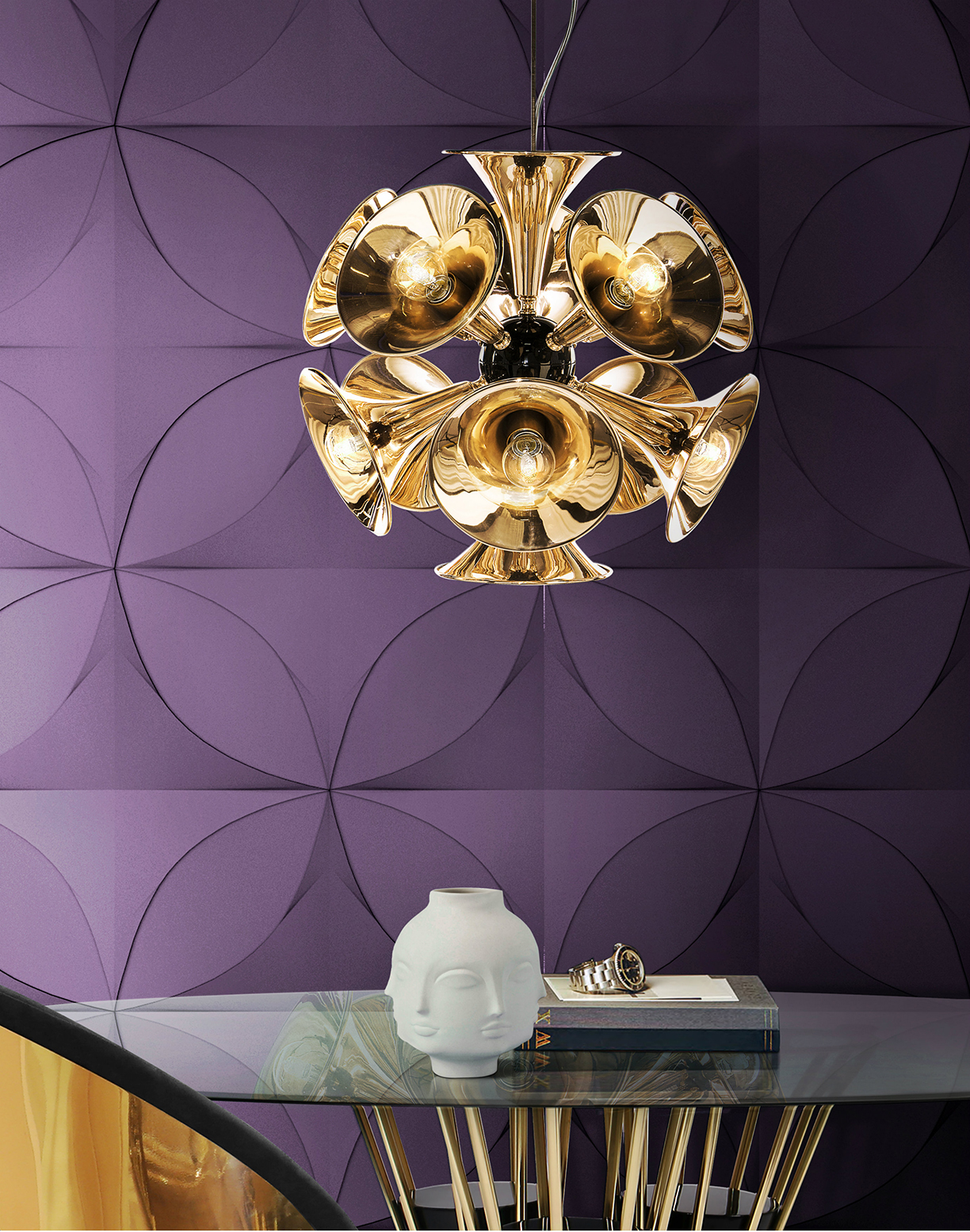
Photo courtesy of DelightFULL
1. Get Creative with Material
With any modern chandelier, the material matters. Getting creative with the material used to create the chandelier can add a great addition to the room’s decor. Creativity is proven to go a long way in designing the perfect modern chandelier.
The Botti pendant lamp, inspired by the American trumpet player Chris Botti, adds a fun twist by using trumpets as the main material of the chandelier. While still luxurious in its style and design, it adds personality and a conversation piece to the space. While the chandelier is more retro in its style, using a creative material and thinking outside of the box can be beneficial for whichever style is preferred.
2. The Space it Resides
Both small and large chandeliers can be a great addition to any space. It’s important, however, to consider the type of space when choosing which modern chandelier to include in it. For a foyer or room with high ceilings, look for a larger chandelier to create a major focal point. In spaces like dining and living rooms, a smaller chandelier will still be a work of art, yet it won’t take away from the rest of the design in the space.

Photos courtesy of Muse Residences
In recent years, more and more hotels and apartment buildings are getting rid of the traditional designs and replacing them with modern and sophisticated styles instead. The modern chandelier in this residential building is certainly the focal point, simply for its sheer size and elegance. When visitors and residents walk into the building, they are in awe of its design.
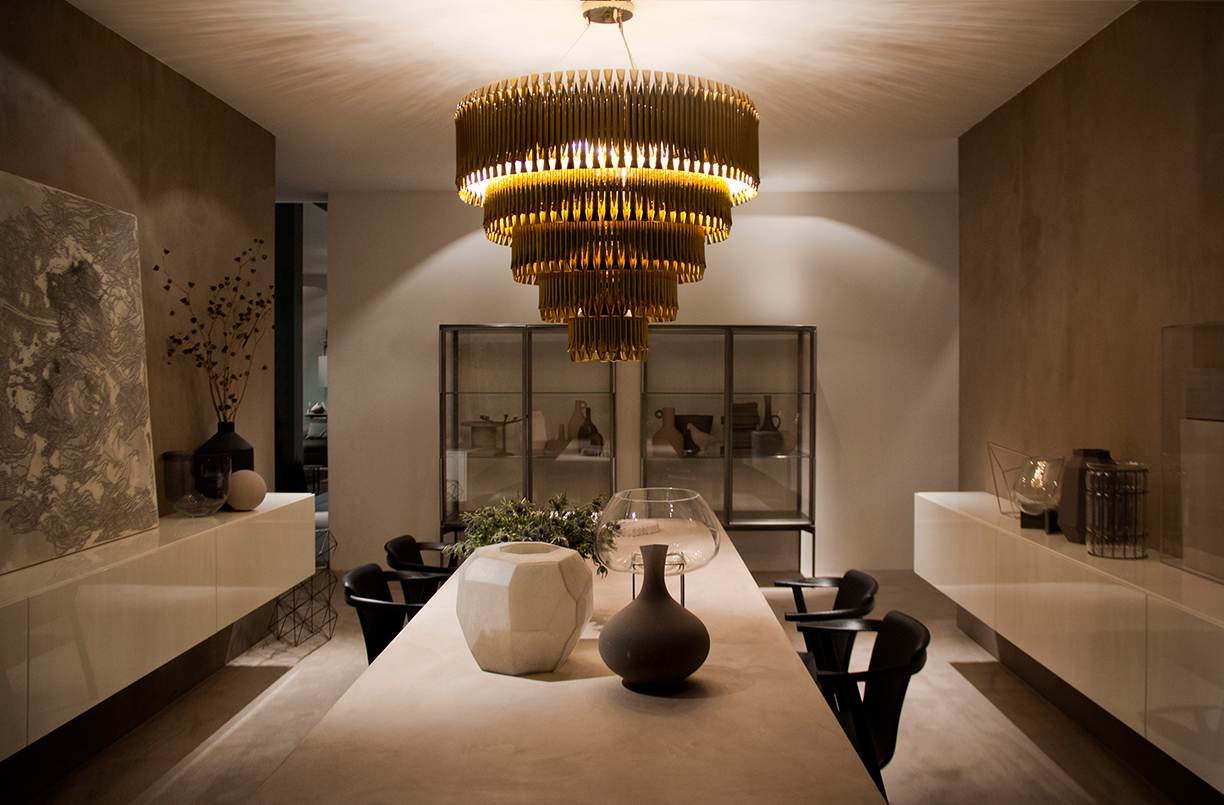
Photos courtesy of DelightFULL
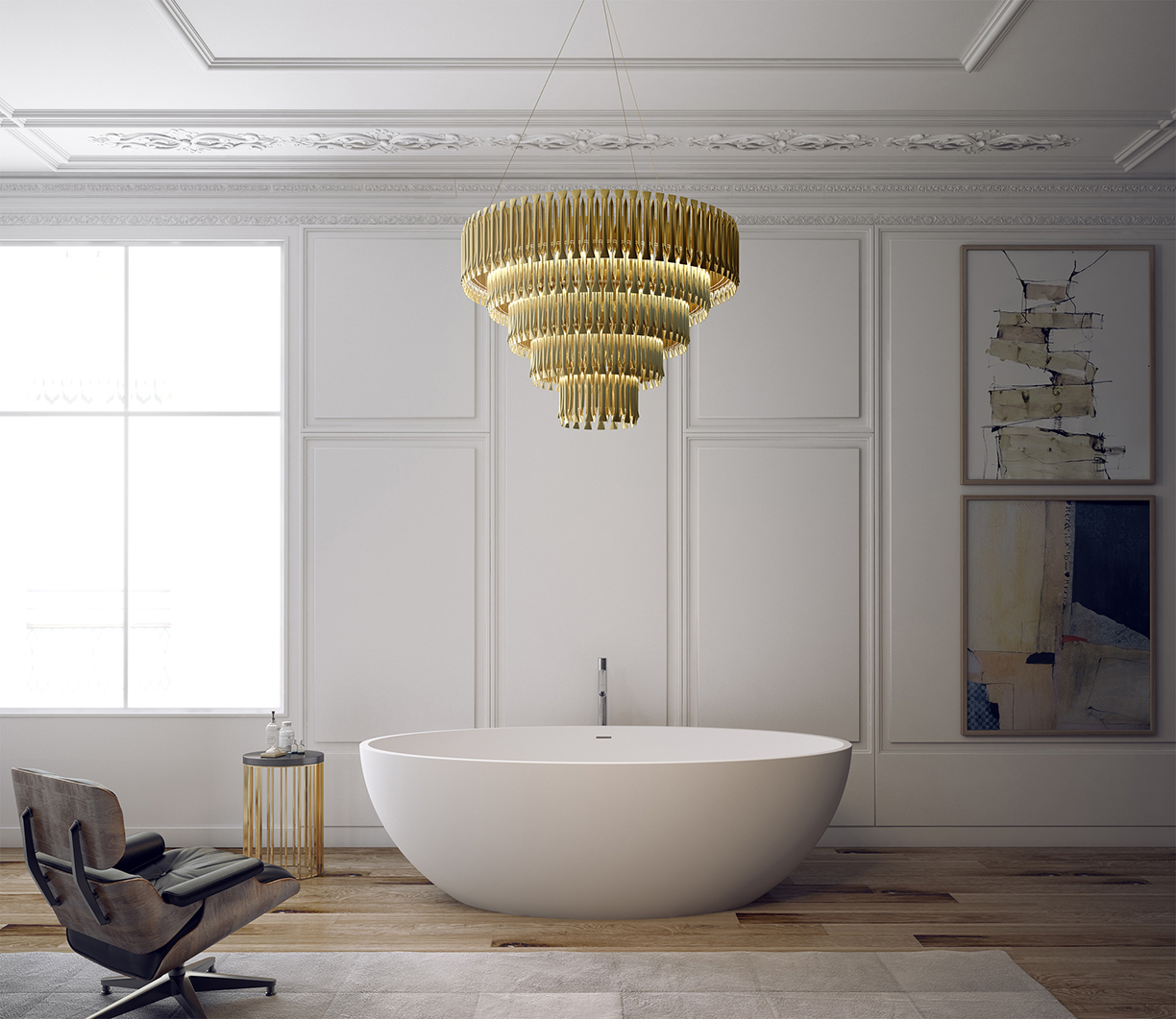
3. The Lighting
In terms of lighting, either a dramatic flair or a softer hue can be a great addition to any space. While the design and material of chandeliers can be similar, the lighting can make a major difference in the atmosphere in the space.
While the first chandelier provides a dramatic light in a darker room, the second provides a more subtle light in a room ample natural light. Both, however, add to the design and atmosphere of the space.
4. A Work of Art
Regardless of the material, design and lighting, it’s crucial to remember the creativity a modern chandelier allows. Whether it’s above a dining table, in the living room as a statement piece or the focal point of the foyer, modern chandeliers aren’t simply light fixtures anymore — they’re works of art.
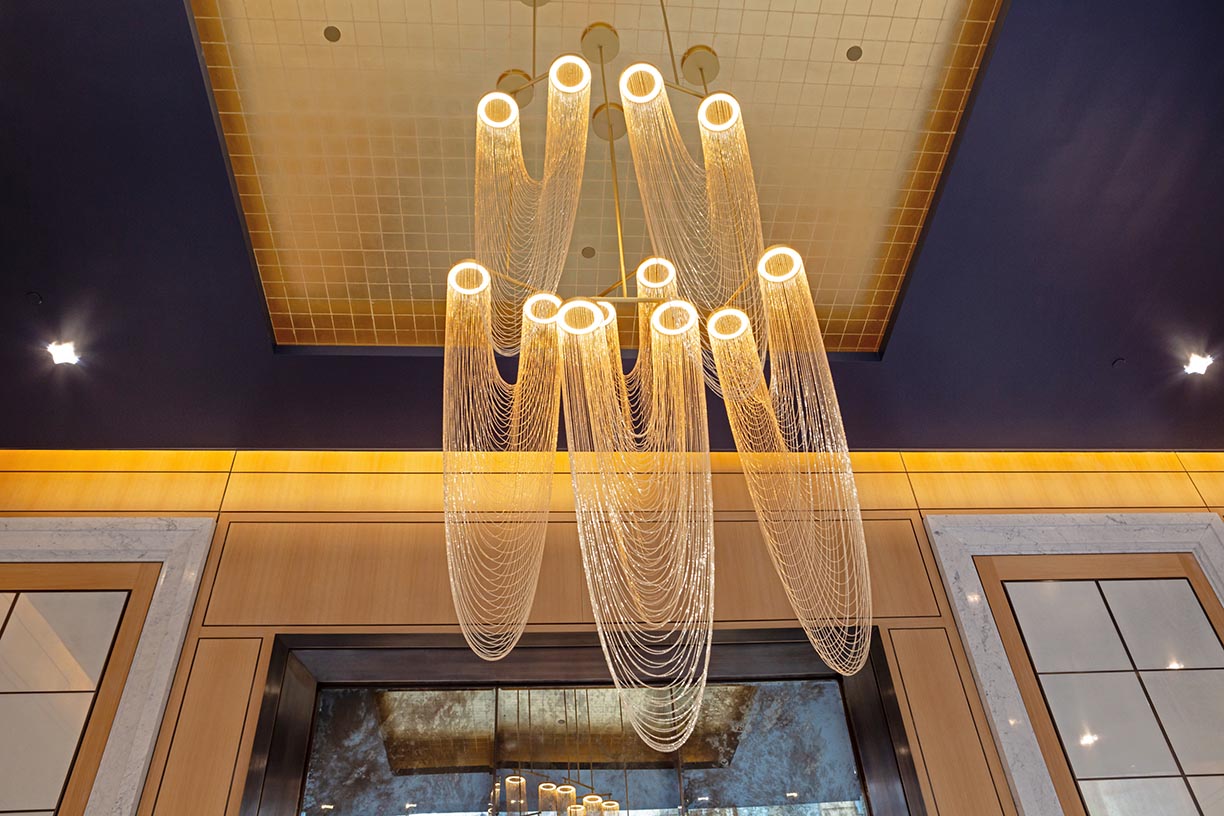
Photo courtesy of The Alyn
Wellness may be a hot topic, but not everyone is sure what it means.
Every year one topic seems to dominate real estate. This year it’s wellness. Yet, if you ask designers and architects what comprises wellness in he home you are apt to get a variety of responses ranging from connections to nature to spaces for meditation or yoga to air quality. Some might point to certifications such as Wellness Within Your Walls or the WELL Building Standard or biophilic design. Others say LEED and other green certifications address wellness.
“I think health and wellness is still in the ‘public education’ stage of what it means. All last year you’re hearing it more and more and more. But I still think it’s educating the designer,” and the public, says Beverly Hills designer Christopher Grubb, president of Arch-Interiors Design Group. Designers often understand the term as it applies to LEED accreditation or to aging in place, but not necessarily the overall concept.
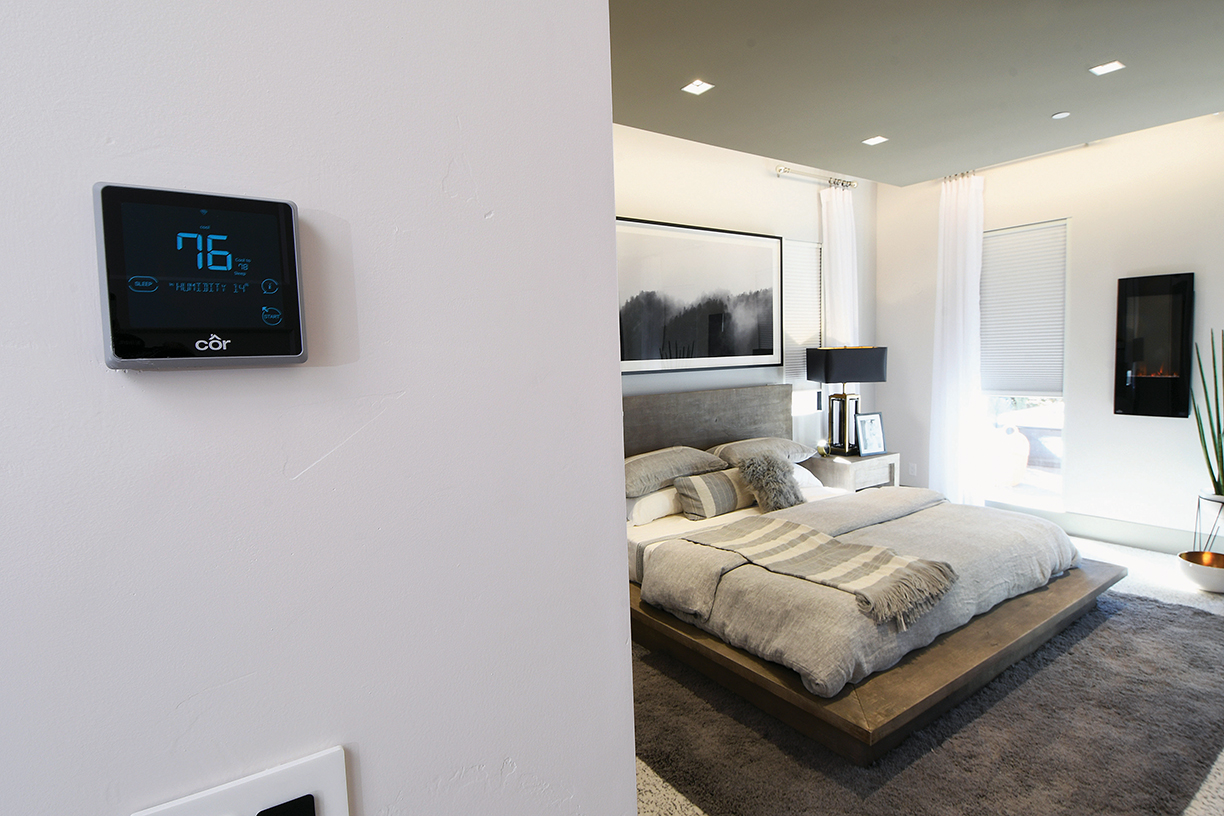
“It might mean one thing to one person and something else to another,” says designer Allie Mann with Case Architects and Remodelers in Washington, D.C., noting that some might be caught up in the movement without fully understanding it.
“I think that this is really being driven by a lot of consumer behavior. When it comes to the builder-developer world, I think our consumers are much more educated. I think they know what they want. They just don’t know how to get there,” says Angela Harris, creative director and principal of TRIO, an award-winning, market-driven, full-service interior design firm in Denver.
“Health and wellness is a new frontier for all of us, says Jacob Atalla, vice president of sustainability for KB Home. KB Home, along with Hanley Wood, KTGY Architects and Delos, a tech and wellness company, created a concept home outside of Las Vegas in Henderson, Nevada, to illustrate what a home designed with wellness as a core value looks like and how it functions. “It is the home story of the future,” he says.
Even though wellness seems to have suddenly burst onto the housing scene in the last year, the idea of connecting home to health is not new. More than 20 years ago, health issues potentially linked to building materials and toxic conditions such as black mold gained attention, giving rise to the term sick building syndrome. Since then, awareness of the relationship between the built environment and health has been growing. A decade ago, new technologies led to the development of products that either reduced the level of toxic contaminants released into the indoor ecosystem or scrubbed the air of VOCs (volatile organic compounds). Other concerns about noise, water and connections with the natural environment were also beginning to surface. At the same time, health and wellness was becoming an important value for consumers worldwide, expanding beyond fitness to include personalized medicine, mind-body connections, spa, wellness tourism and also the built environment.
By 2015, wellness had morphed into a $3.7 trillion industry worldwide, according to the Global Wellness Institute, and climbed an additional 6.4 percent annually to reach $4.2 trillion in 2017. One of the fastest growing sectors in the wellness space is a category called Wellness Lifestyle Real Estate, which includes everything in the built environment that incorporates wellness elements in design, construction, amenities and service. In addition to physical well-being, wellness real estate also addresses social wellness and mental, emotional and spiritual wellness.
The biggest difference between homes designed to promote wellness and homes that address air quality or other environmental factors that impact physical health is that wellness is integral to the design and permeates every aspect of the home from floor plan to amenities. “Overall you are programming the home to be more livable,” says Harris.
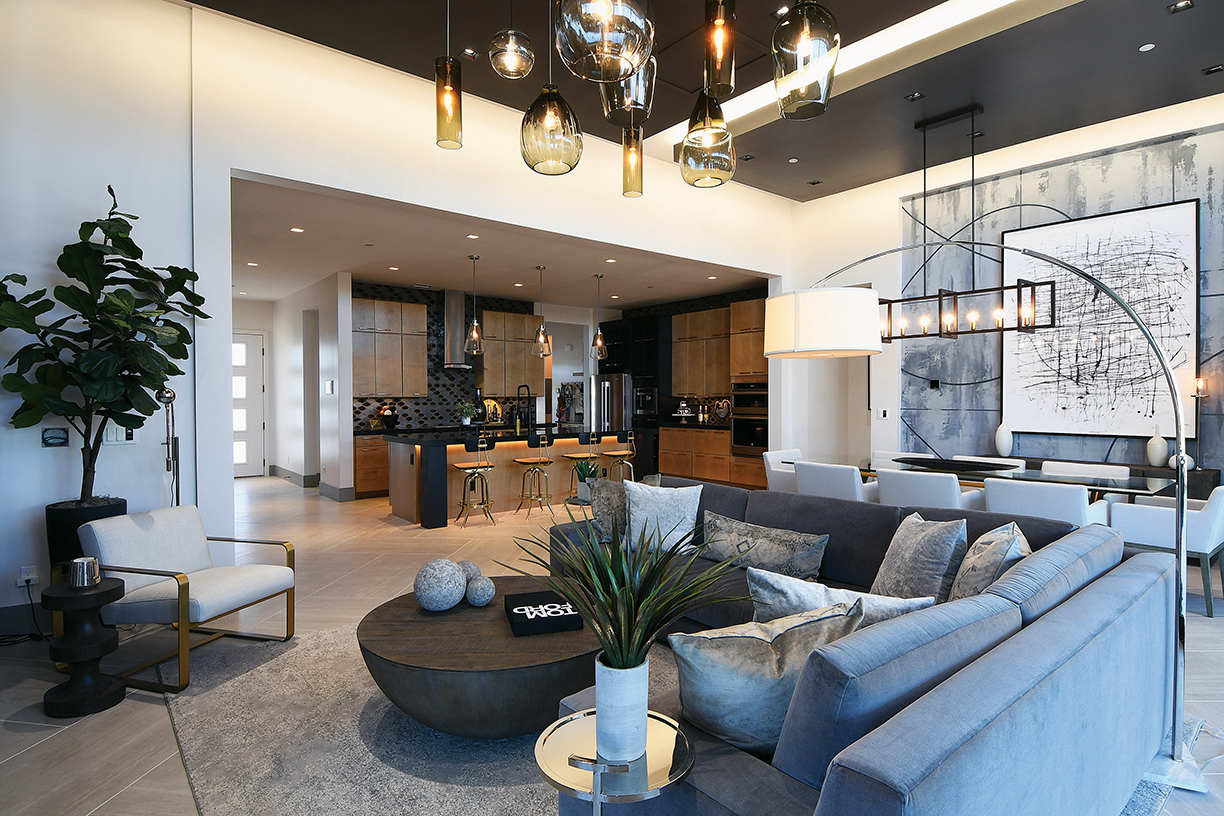
Frustrated by the lack of attention to the ways in which indoor environments influence health, Phil Scalia, a former partner at Goldman Sachs, founded the initiative that eventually became Delos, which has been on the forefront of wellness in the built environment for more than 10 years. In 2014, Delos established the WELL Building Standard, which was initially applied to commercial buildings. Over 1,200 projects in 45 countries, across over 250 million square feet of commercial real estate, fall under the WELL umbrella. The WELL standard focuses on seven categories of building performance: air, water, nourishment, light, fitness, comfort and mind. Additionally, it takes connections between a building and the surroundings into consideration.
During groundbreaking work on EcoManor, the first LEED Gold certified single-family residence in the U.S., designer Jillian Pritchard Cooke discovered that both consumers and design and construction professionals lacked accurate information on how to reduce toxins in the interior environment. That was the inspiration for Wellness Within Your Walls, another wellness certification that offers education on building and designing healthier interior environments. The focus is on materials both for construction and also furnishings and finishes.
Another more recent wellness initiative centers around the principles of biophilic design and the benefits of bringing natural elements into buildings. In 2016, Amanda Sturgeon, a biophilic design expert and CEO of the International Living Future Institute spearheaded the Biophilic Design Initiative. In addition to designers, builders and architects, current proponents include tech companies who have added natural elements to buildings to increase productivity and reduce stress for workers.
This year, it’s fair to say wellness is coming home as attention shifts from commercial to residential applications. The KB ProjeKt Home takes wellness in residential structures to the next level. Not only are established practices regarding connections with the outdoors, indoor toxins and air quality embedded in the design, but a synergy with smart home tech transforms wellness from a passive attribute into one that is active.
“The motivation was to examine how we can make the home healthier and at the same time how do we engage that home in partnering with the occupants, with the people living in it, to enhance their health and wellness or engage them in making the environment they live in better. We know that about 90 percent of our lives are spent indoors, and a lot of that indoor living is in your own home,” Atalla explains. Recent research from Hanley Wood shows that homeowners believe housing is essential or extremely important to good health, and two-thirds say the right housing environment could cut annual medical costs by 40 percent.
Central to the home’s wellness quotient is an innovative smart system, dubbed DARWIN, developed by Delos. This first of its kind, home wellness intelligence network constantly monitors the home environment and interacts with and adjusts systems in the home as needed. A network of sensors built into the walls — there are nine in the ProjeKt Home — constantly tests air quality.
If it detects problems with air quality, containments or chemicals from everyday products, DARWIN directs the climate control systems to bring more fresh air to that room. Water quality is also monitored, and purified water is delivered to every fixture in the home. “You have a wellness intelligence system that is constantly doing things on your behalf to increase your wellbeing,” says Atalla.
The system also monitors the plumbing system and alerts homeowners to leaks. Sleep is an important wellness component and the master bedroom in this home is primed to promote slumber. Special noise-damping drywall ensures quiet. Motorized shades block out exterior light. “Total quietness, total darkness, and circadian rhythms help you sleep,” adds Atalla.
Lighting is another mainstay of wellness formulas, both natural light from large windows and expanses of glass as well as interior lighting keyed to circadian rhythms. DARWIN adjusts lights to match the time of day. But what makes this function more worthwhile is the homeowner can change the lighting to produce a desired effect, which means the lights can create an energizing morning environment even if morning comes at 5 a.m. on a stormy day.

A living garden wall enables the home to grow herbs and microgreens. Turning the home and kitchen into a place to produce healthy food is an emerging area of innovation for kitchens.
Social interaction is another wellness component, and community design increasingly takes social interaction into account with spaces such as walking trails, parks and coffee houses designed to encourage interaction and encounters among residents as part of everyday life.
It might seem like a big jump to add wellness to typical new homes, particularly production homes, but Atalla says the KB ProjeKt Home is an example of what can be done. Additionally, Harris says it’s often an easy tweak to add features such as water filtration in the kitchen and master bath. “That doesn’t cost a whole lot. And again, I think it’s just about livability and how you’re programming your floor plan to be more livable.”
Looking ahead, most research points to continued growth of the wellness economy, with new initiatives approaching wellness from the perspective of design, construction, materials and function. There are now more than 740 wellness real estate and community developments built or in development across 34 countries — a number that grows weekly according to the Global Wellness Institute.
Right now, the $134 billion wellness real estate market is about half the size of the global green building industry and projections call for the pace to continue. “But the wellness market isn’t just growing, it’s extremely dynamic. We believe that the three sectors that represent the core spheres of life will see the strongest future growth — wellness real estate, workplace wellness and wellness tourism — while other sectors will also grow as they support the integration of wellness into all aspects of daily life,” says Ophelia Yeung, senior research fellow, GWI.
Whether you’re organizing that shoe collection that keeps on growing, displaying your endless accessories, or if you’re striving for a clean, minimalist style and feel, a little extra storage never hurt. Even pricey and luxurious apartments in places such as New York City aren’t offering much space.
Get inspired with these storage tips and find the perfect place for everything in your home.
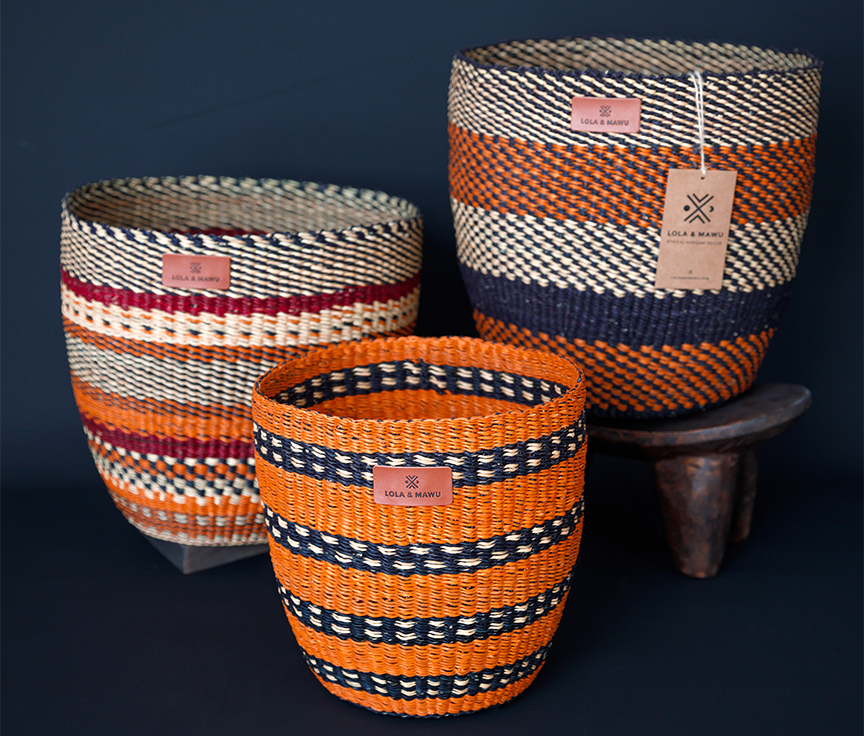
Photo courtesy of Lola & Mawu
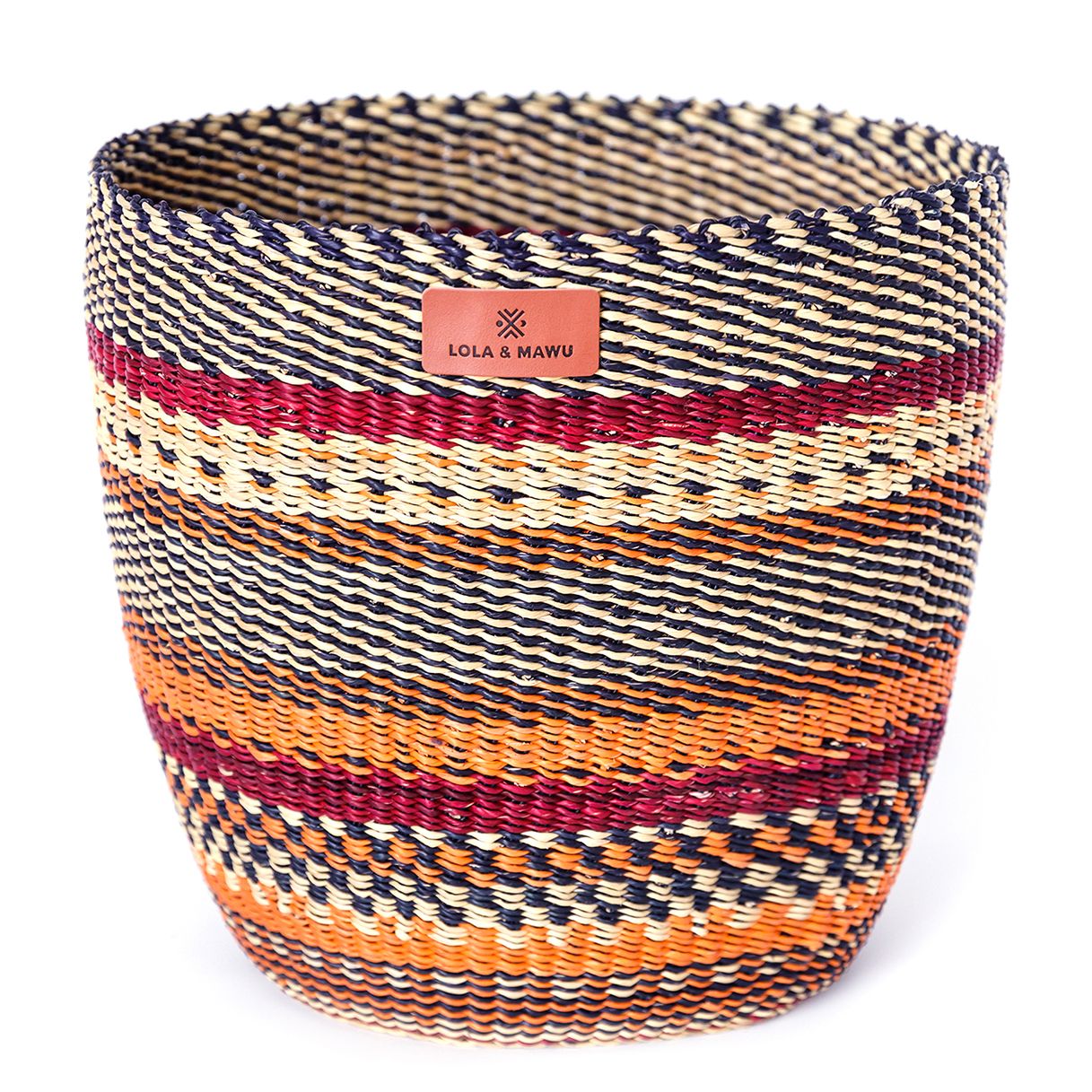
Photo courtesy of Lola & Mawu
Be bold and embrace your own style. Even if you are working toward a more neutral style with clean lines, it’s okay to introduce a few pops of color. Your storage is the perfect place to try new color schemes and patterns because they are easy to switch out and adjust with your growing taste and the changing seasons.
Portable, movable storage is the best kind of storage. The convenience of wheels should never be overlooked. If you’re hosting an event, entertaining guests, or simply looking for a fresh feel, storage that can be moved make the process of change seamless. Simply wheel a fun, stylish cart into the next room for all of your storage needs.
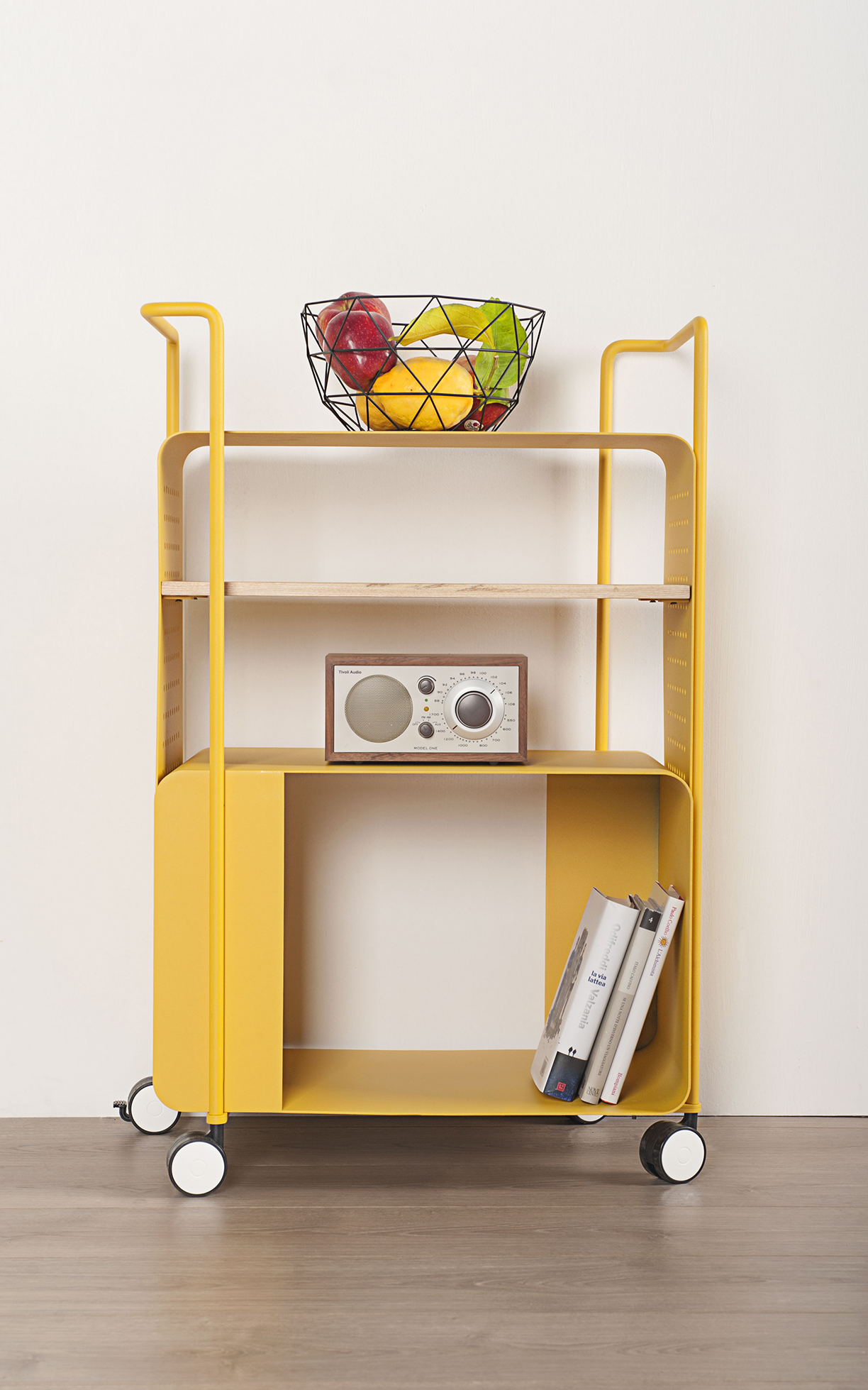
Photo courtesy of Lime Lace
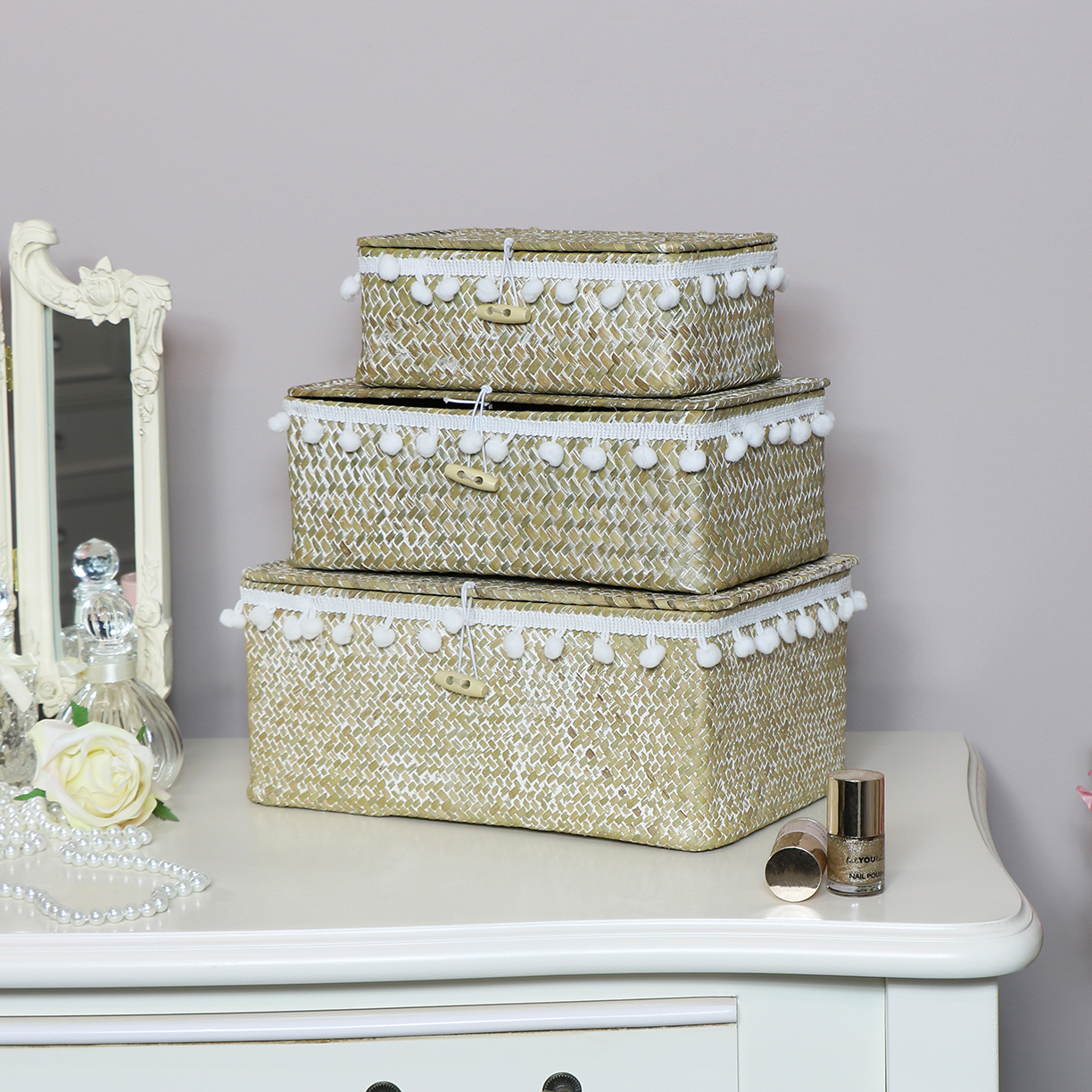
Photo courtesy of Melody Maison
There’s no shame in falling in love with storage space that is not the most functional. A few stacked baskets with a playful touch of fringe is a nice addition to your bedroom or bathroom. The layered look adds complexity and style to your room, and it can still be functional for small items and accessories.
When in doubt, try under the bed. The space below your bed was made for storing blankets, shoes, winter sweaters and more. Built-in storage is even less noticeable under your bed and ensures that you’ll always have a little extra room to stash your bulkier items or less used items. These clever built-in draws will help clean up any bedroom.
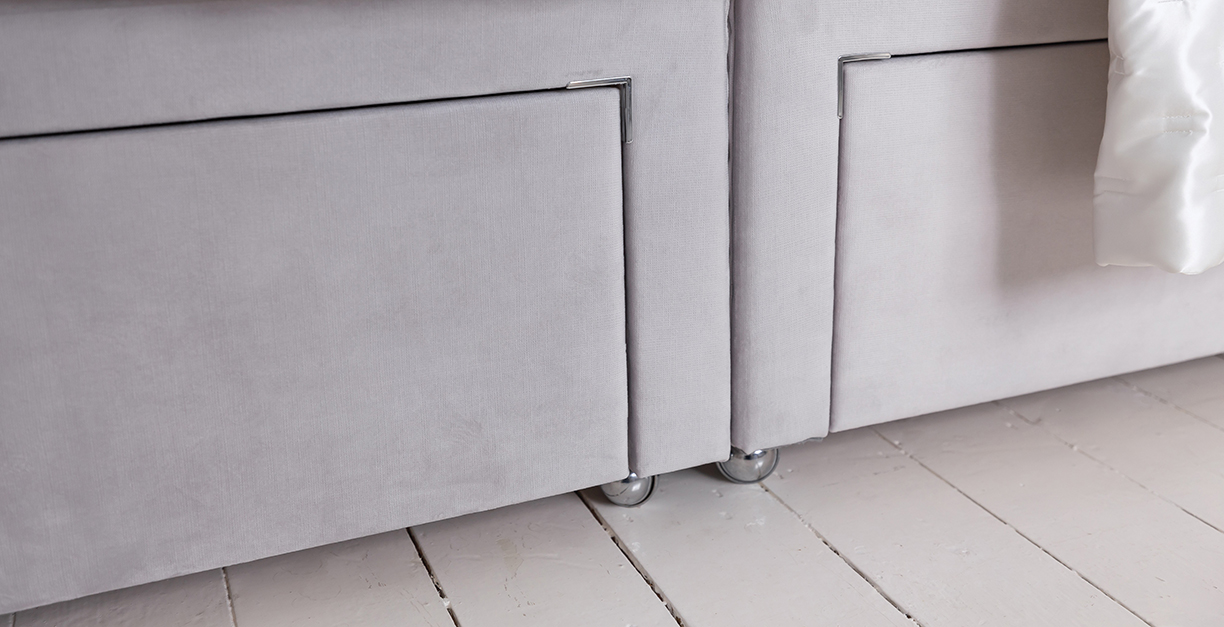
Photo courtesy of The French Bedroom Co.
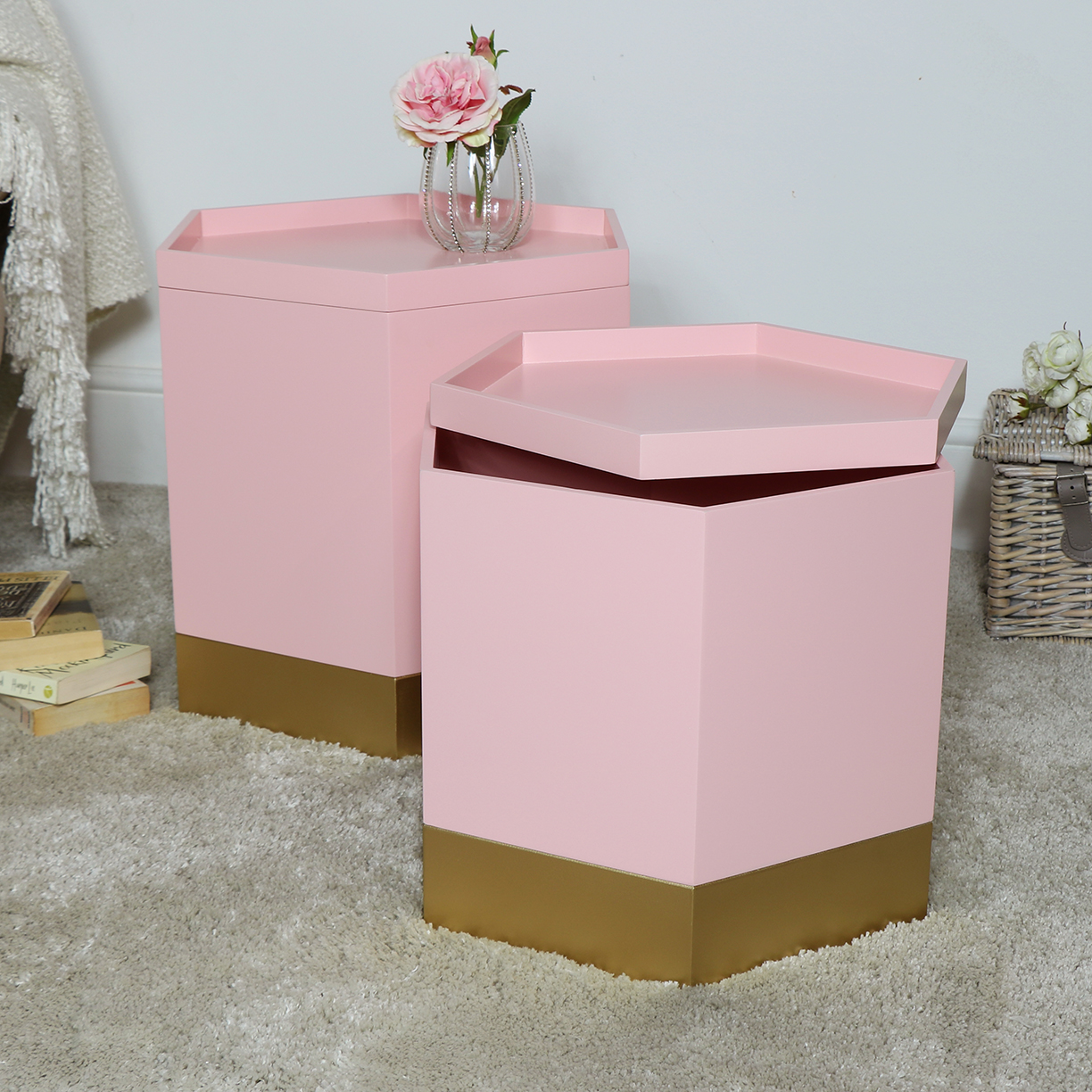
Photos courtesy of Melody Maison

Multi-functional is never a bad thing. Side tables, ottomans, benches, and other furniture that offer a hidden storage section is a dream come true. Forget searching for bulky storage options that take up space and ruin your decor. Find a charming side table that serves as a storage unit to declutter any room.
Boho may bring overwhelming patterns and a mix and match style of colors to mind but these refined expressions of boho are bringing a whole new touch of elegance and class to the term.
Choose the bohemian blend that is perfect for you and your home.
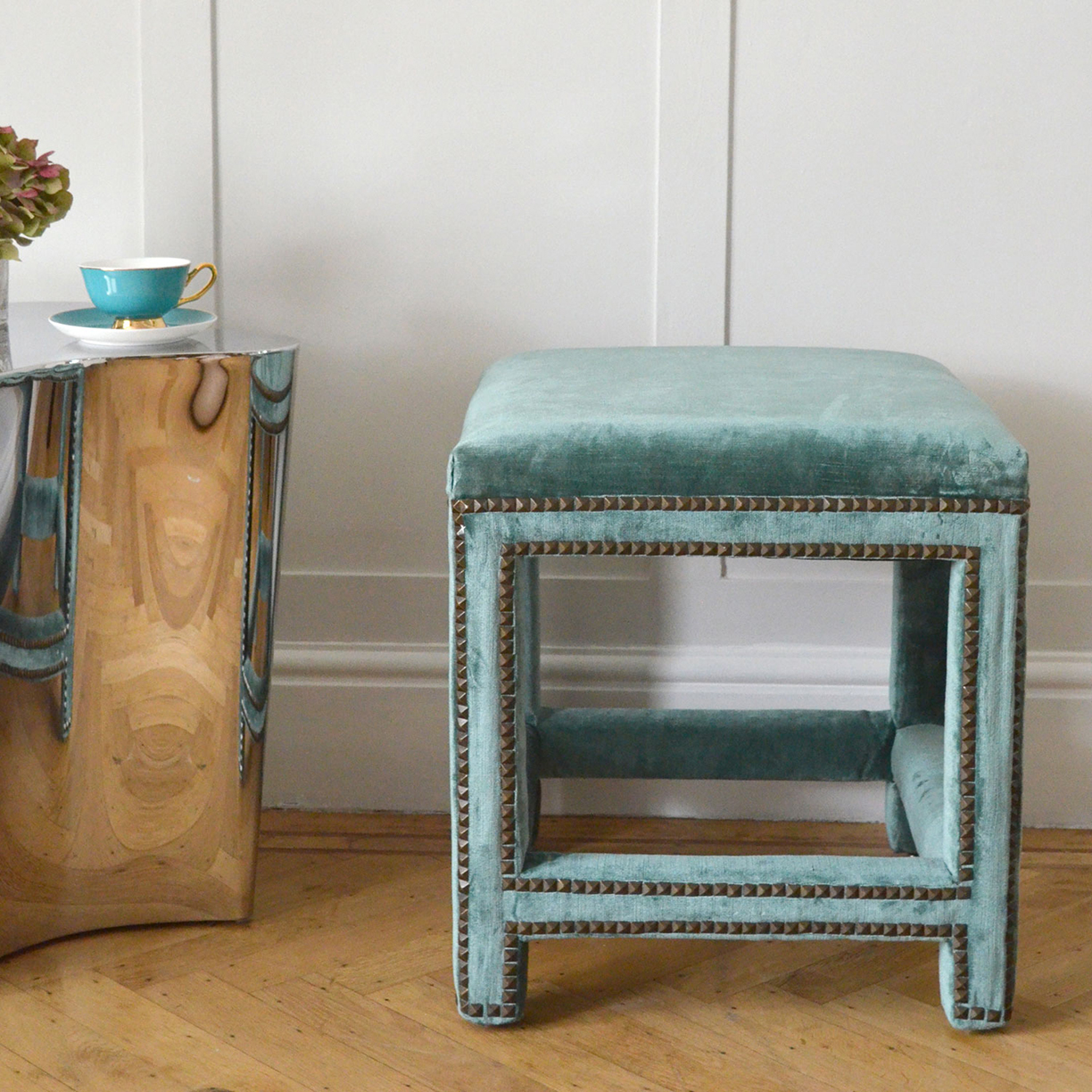
Photo courtesy of Sweetpea & Willow
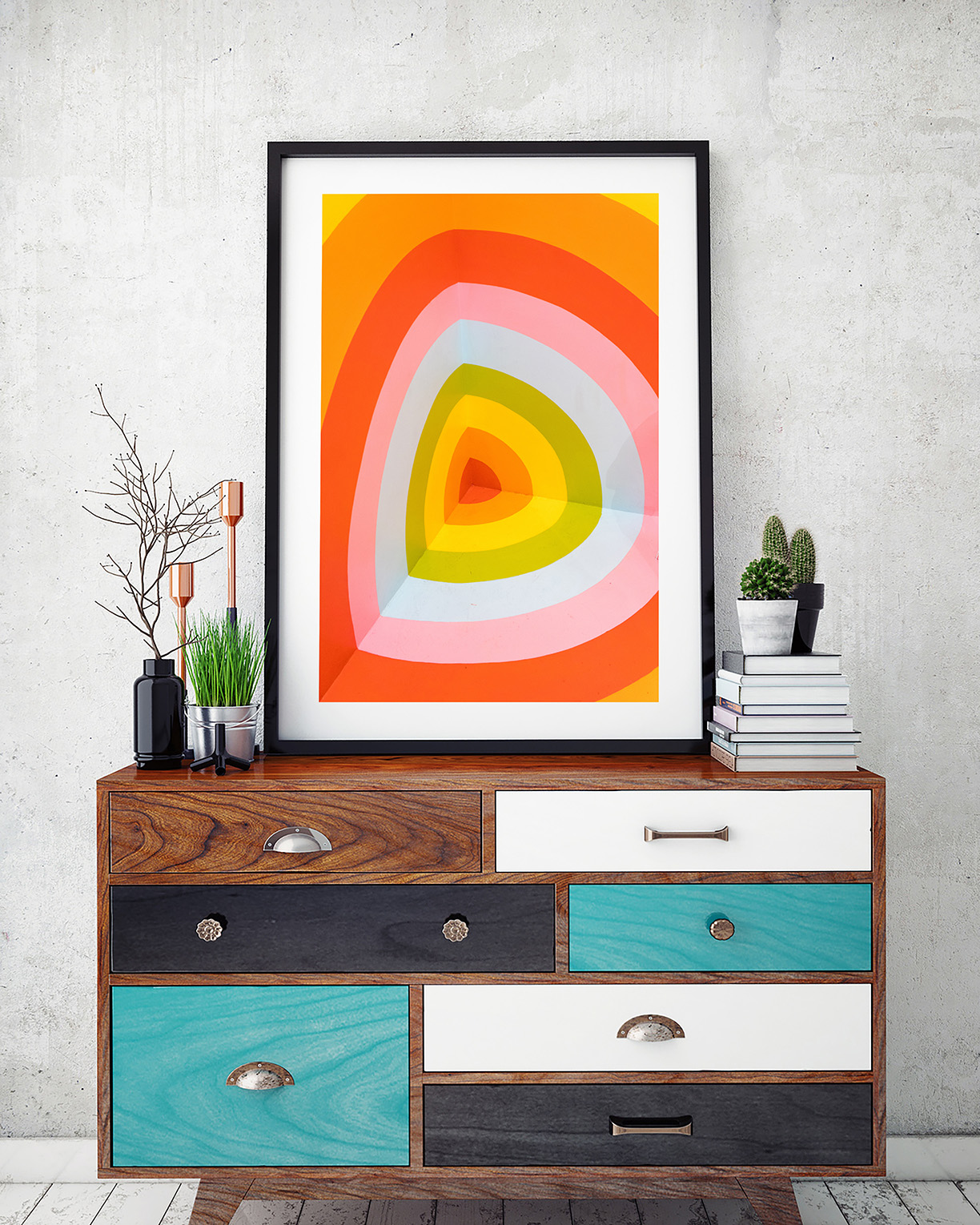
Photo courtesy of ABSTRACT HOUSE
African Boho
When many people think of boho style, they think of African inspired bohemia, namely the bright colors, clashing prints and metal tones that are often introduced into the décor of a boho themed living space. Include lanterns, jewel-colored cushions, and ottoman style seating to achieve this laid back vibe.
European Boho
European boho is a little more refined in its mix and match approach, though strives to look spontaneous. European style boho is characterized by vintage style furniture paired with rustic beaded curtains and quirky wall art. Layers, mixed fabrics, and statement wall décor will make or break this look.
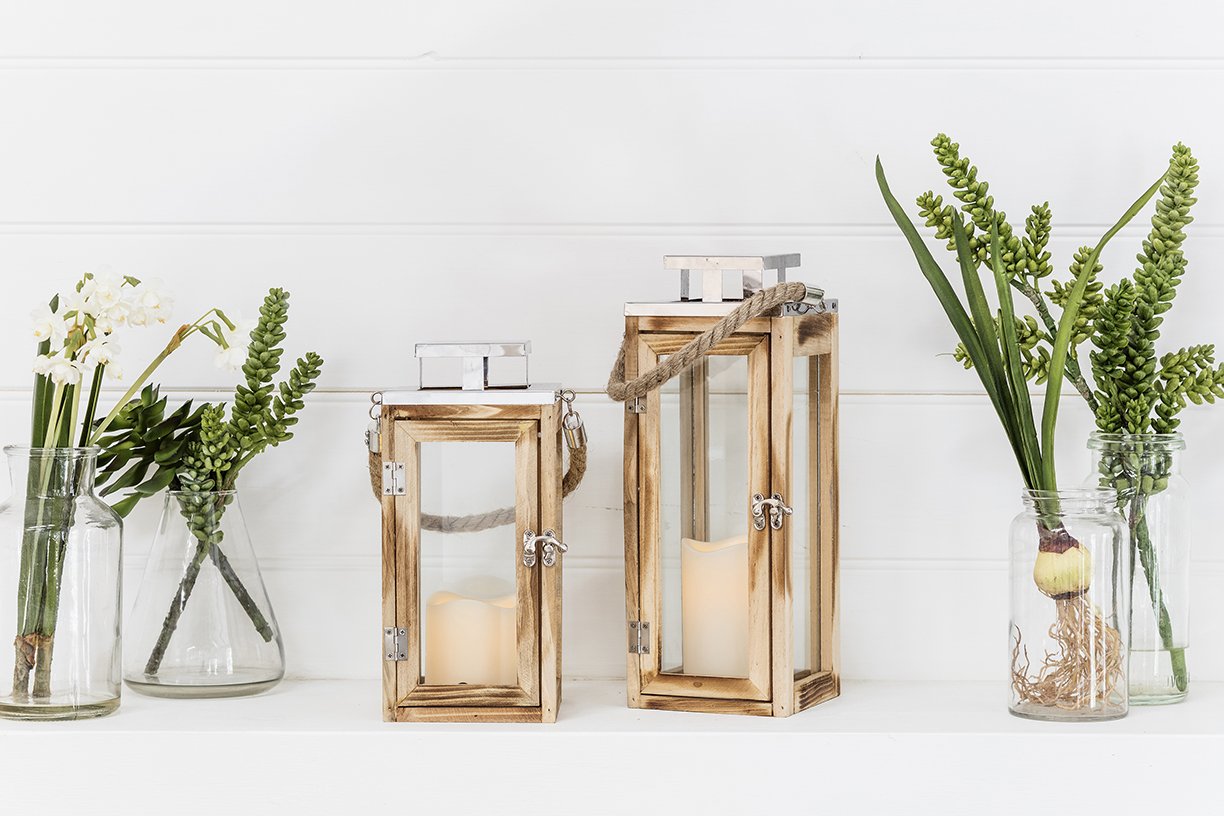
Photo courtesy of Lights4fun
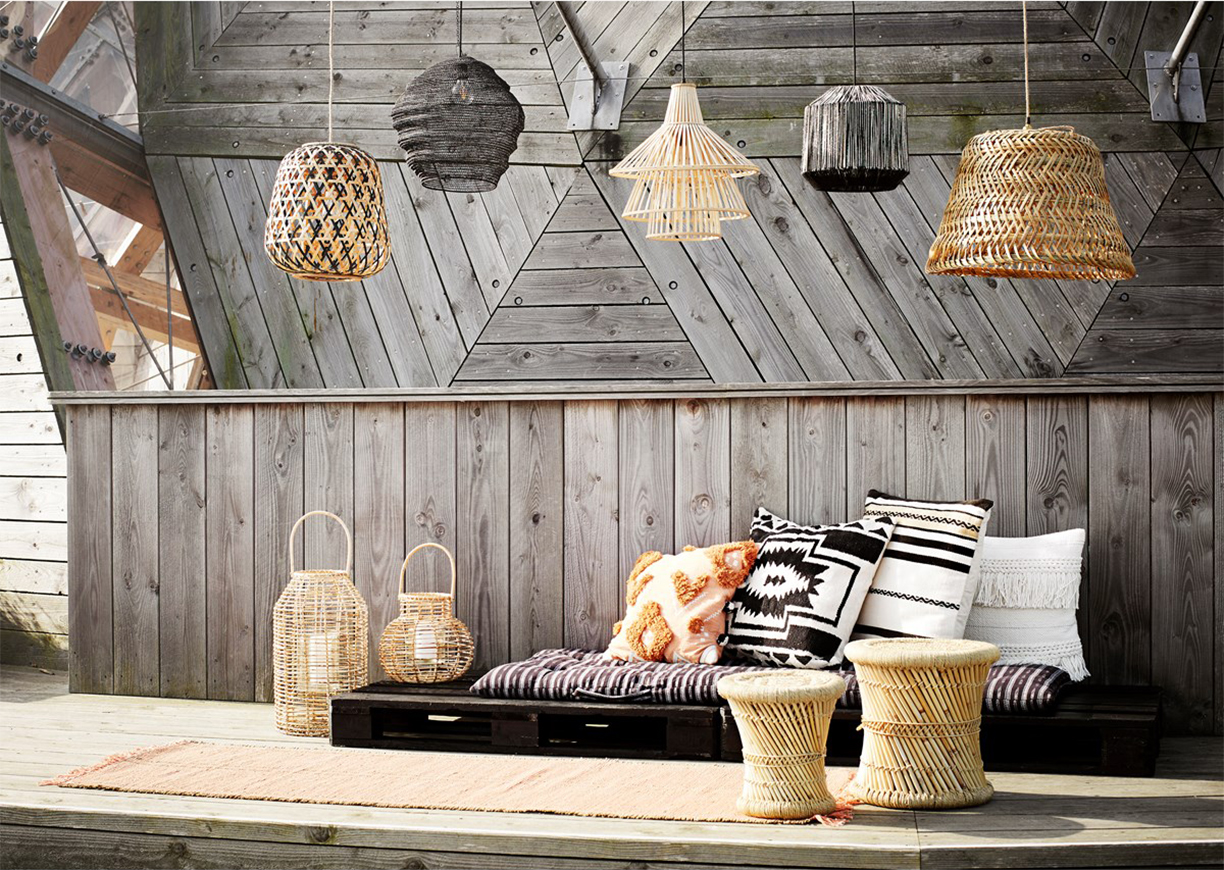
Photo courtesy of Flo & Joe
Western Boho
The 1960s and 70s saw a resurgence in bohemian style, one that was influenced by community living that became a prominent characteristic of the counter culture. The western bohemian style relies heavily on natural materials and fabrics to complete the aesthetic. Think exposed beams, tribal prints and pouffe’s or floor cushions rather than traditional seating.
Contemporary Boho
So what’s happening now with Boho style? Contemporary Boho style borrows from its processors but combines elements of the classic boho styles with modern minimalist living. Think white walls and floors, wicker seating and animal head wall art. Cushions and rugs add splashes of color while décor pieces can range from vintage to African to contemporary.
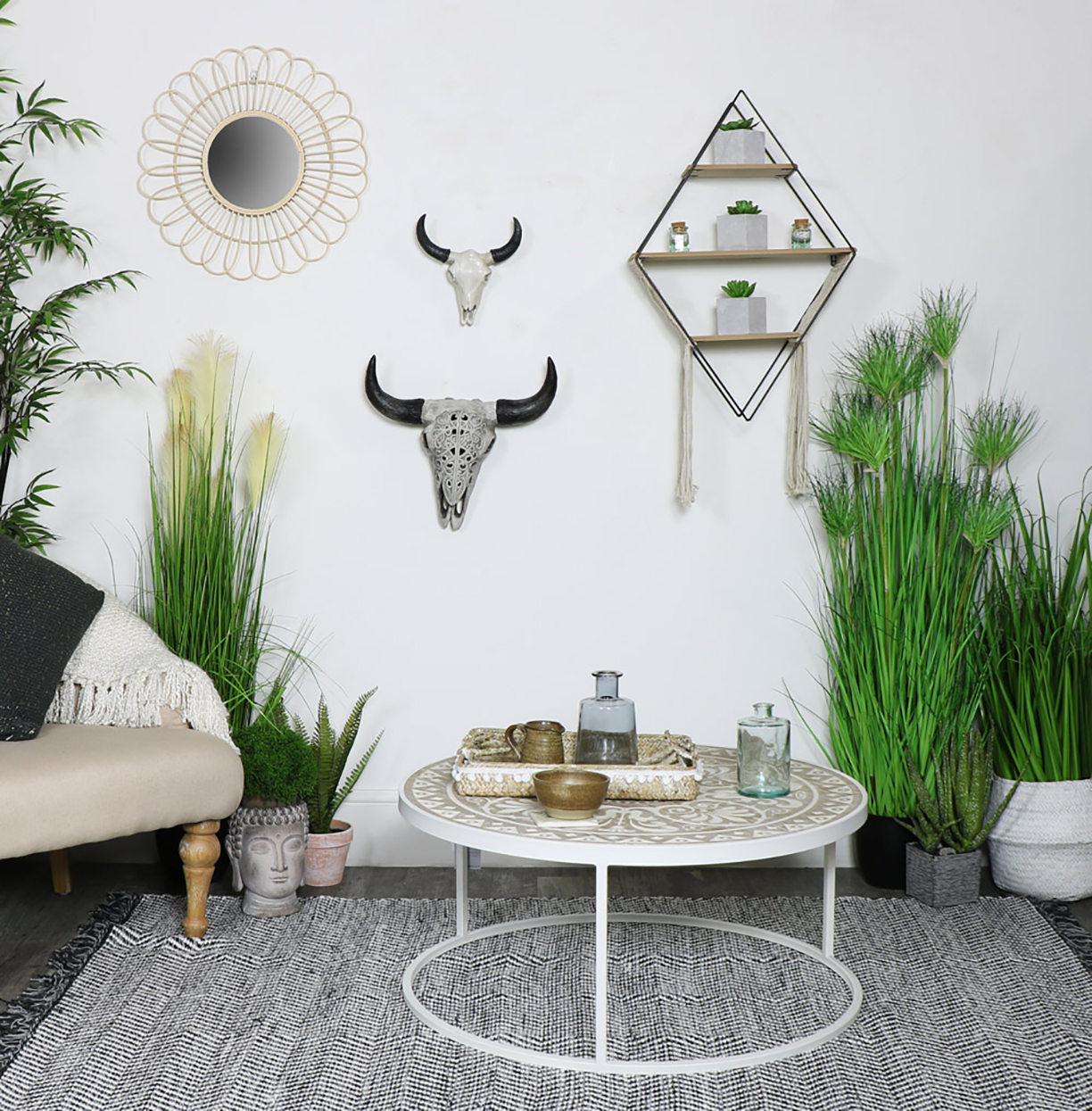
Photo courtesy of Melody Maison
One of the world’s leading Peruvian restaurants, La Mar, by renowned chef Gastón Acurio, is announced as the latest culinary addition to The Royal Atlantis Resort & Residences, set to open late 2020.
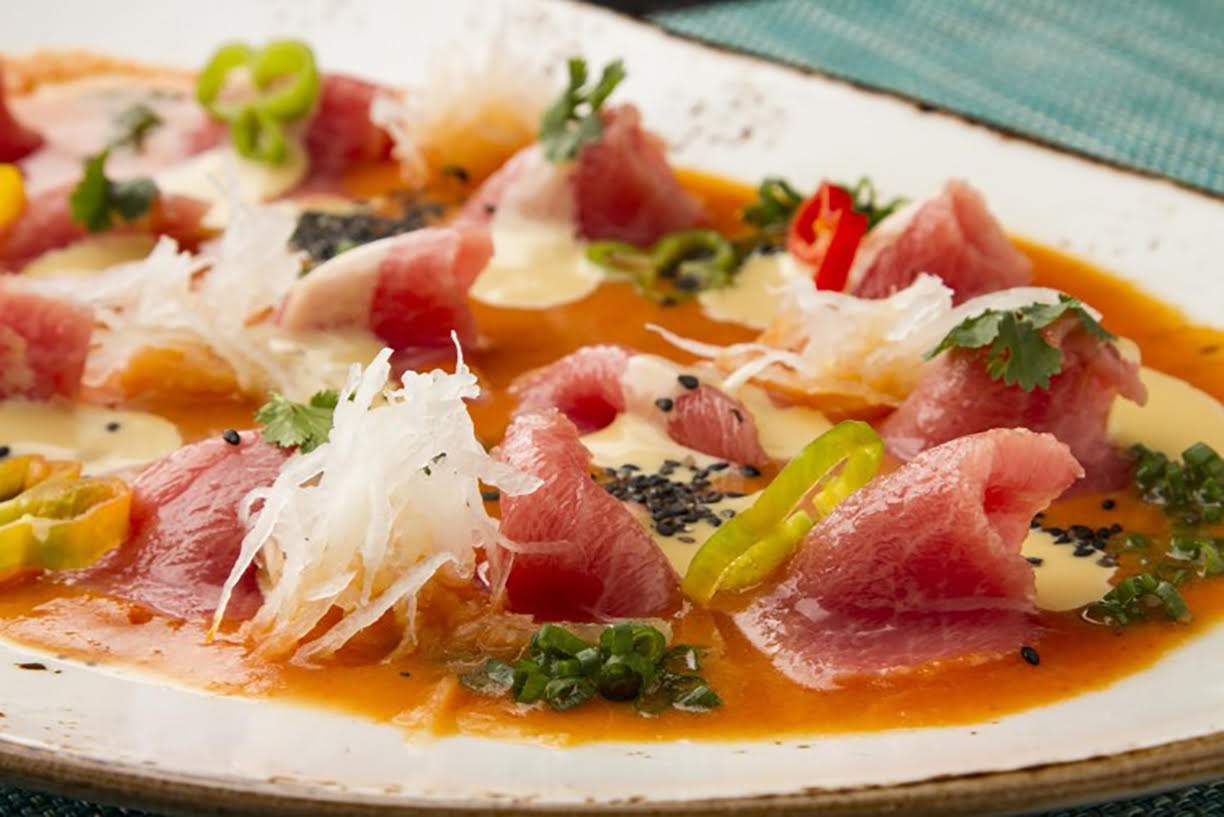
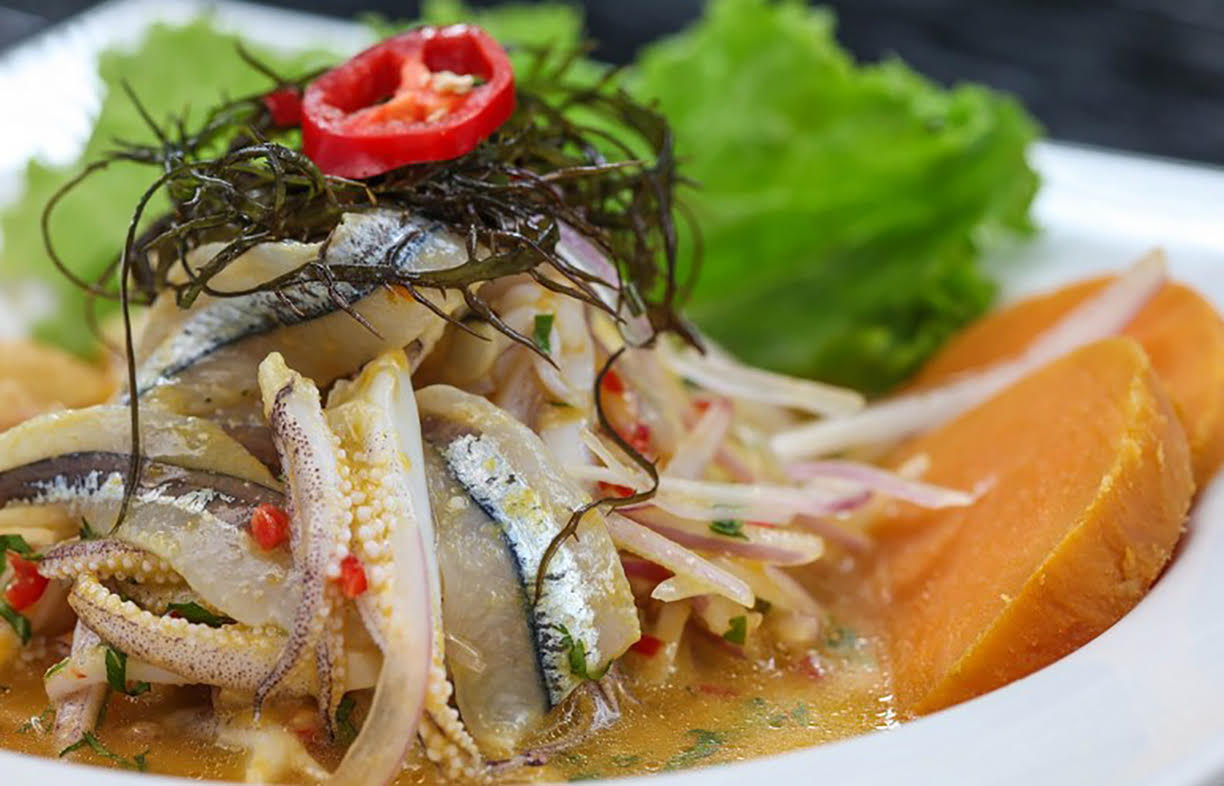
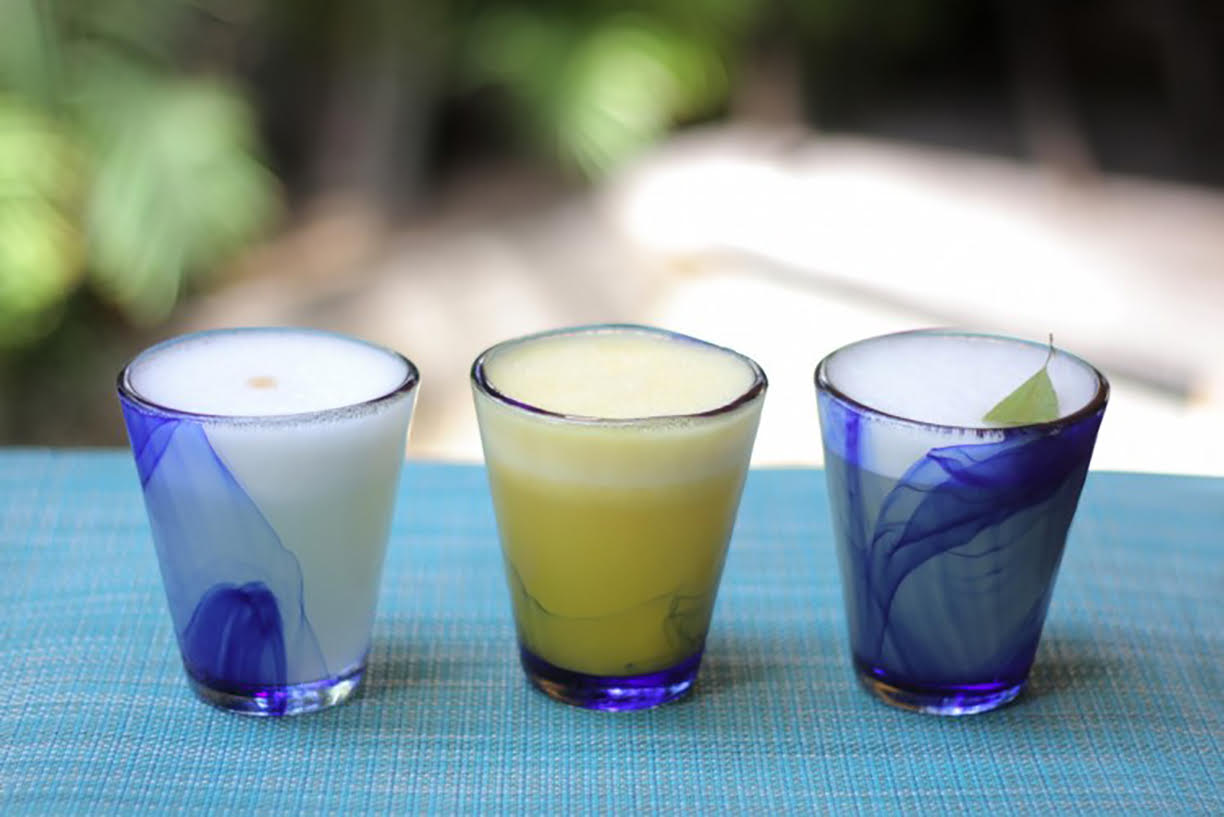
Celebrating the authentic and diverse flavors of Peruvian gastronomy, the restaurant’s contemporary design and elegant interior will provide the perfect backdrop for La Mar’s signature ceviche, freshly grilled anticuchos and pisco-led cocktails.
Renowned for his daring experiments using local ingredients, techniques and recipes, Acurio’s flagship restaurant won the No.1 spot on the inaugural Latin America’s 50 Best Restaurants list in 2013 and has held a place on The World’s 50 Best Restaurants list since 2011.
Now with over 50 restaurants worldwide, including three in America, Acurio has won the hearts and stomachs of worldwide food lovers with his unparalleled ceviche, unique Peking-style guinea pig pancake, and desserts inspired by his childhood. In 2018 Acurio was awarded The Diners Club Lifetime Achievement Award, regarded as one of the most prestigious accolades in the world of gastronomy.

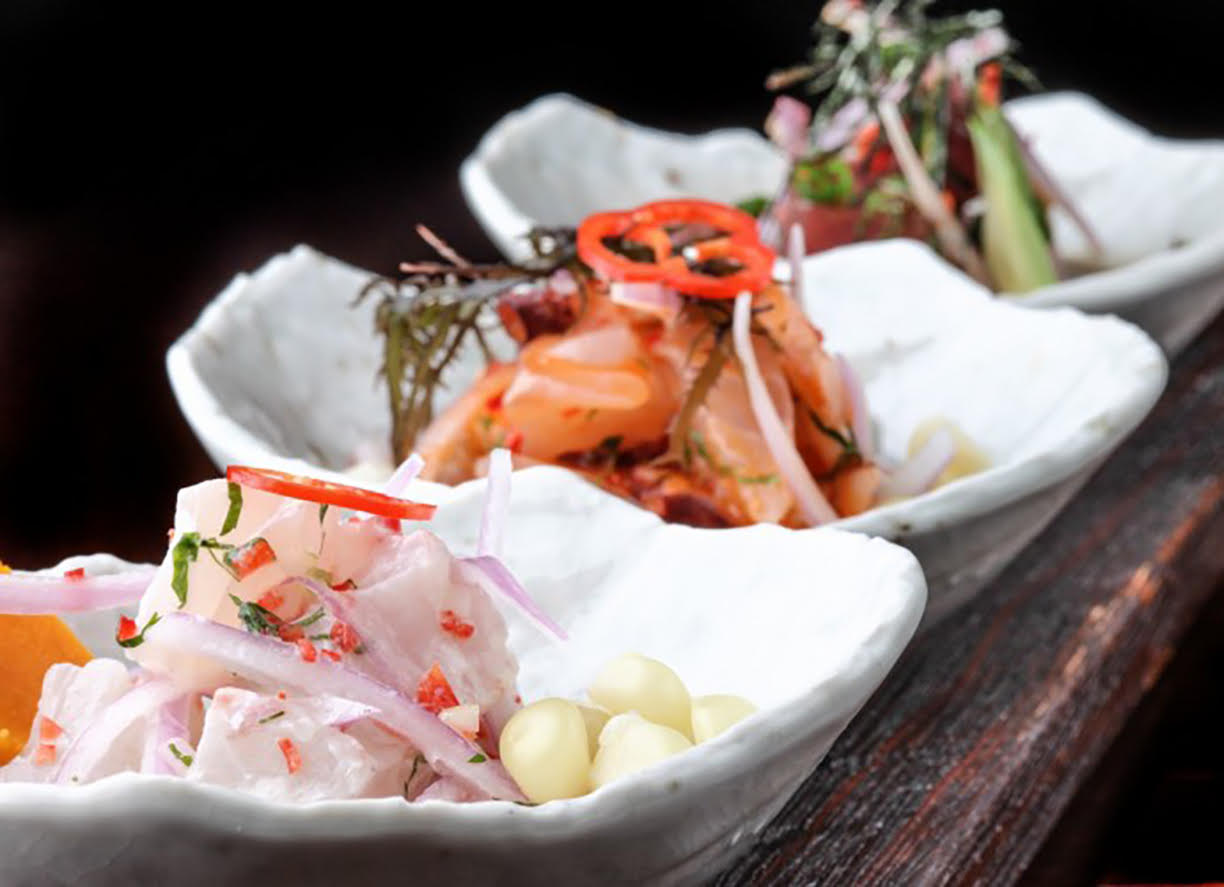
Located at mezzanine lobby level in The Royal Atlantis Resort and Residences, La Mar by Gastón Acurio will be the first traditional cebichería in Dubai, welcoming guests to an intimate space devoted to the South American tradition of ceviche and pisco sour. With a casual elegance and easy-going vibe, the signature features of La Mar will include an open kitchen, ceviche bar and an anticucho grill, where Acurio’s team of expert chefs will prepare marinated fish as well as tiraditos, causas and marinated anticucho skewers.
Inspired by the design of a ‘Fisherman’s Wharf’, guests will be greeted with a high cane ceiling upon entry with natural light spilling in from floor-to-ceiling windows overlooking the Palm Island via a large open terrace. Natural materials such as iron, cement, wood and stone complement a warm color palette of marine blues, green, sandy grey and beige evoking a sense of the ocean at every turn. Handcrafted and locally sourced tableware will emulate rock, coral, the seabed and shimmering fish scales.
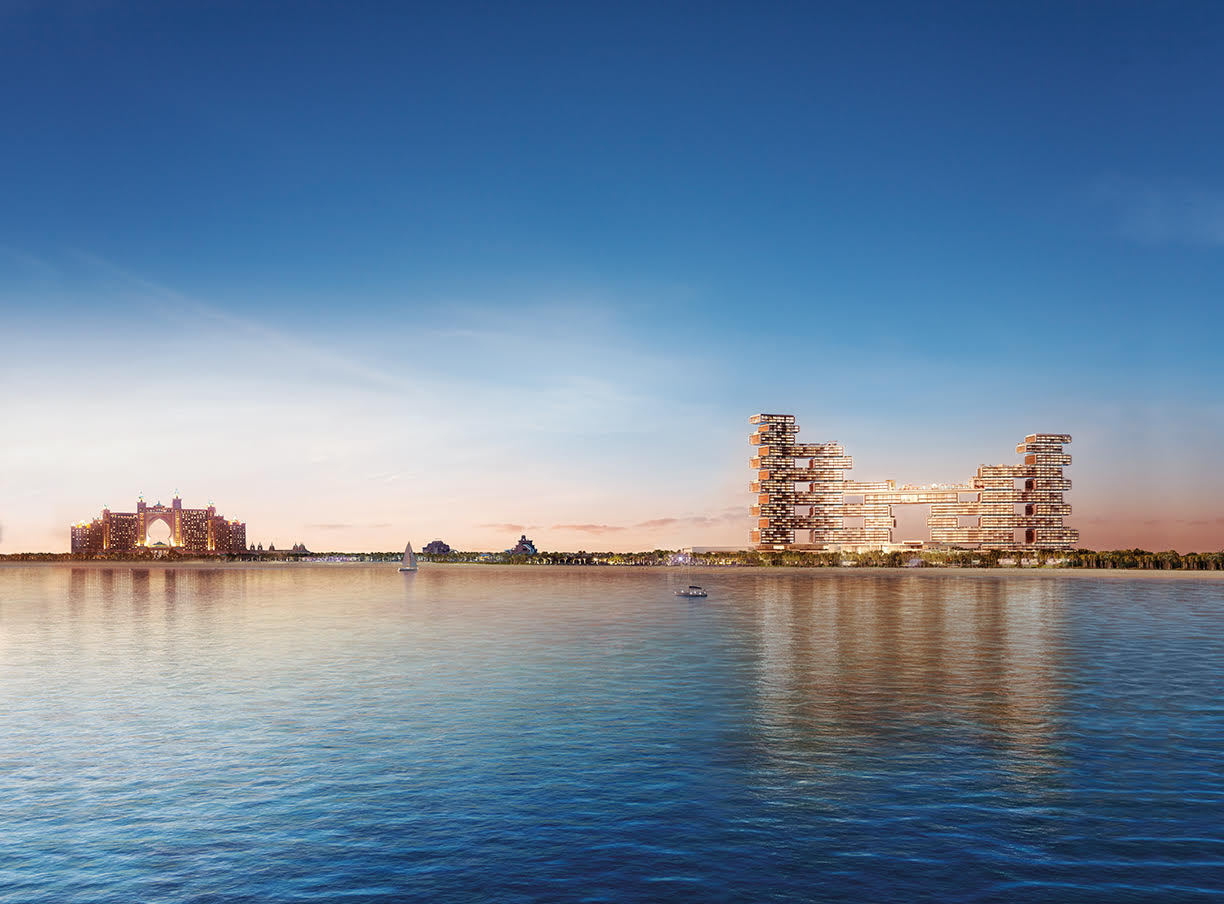
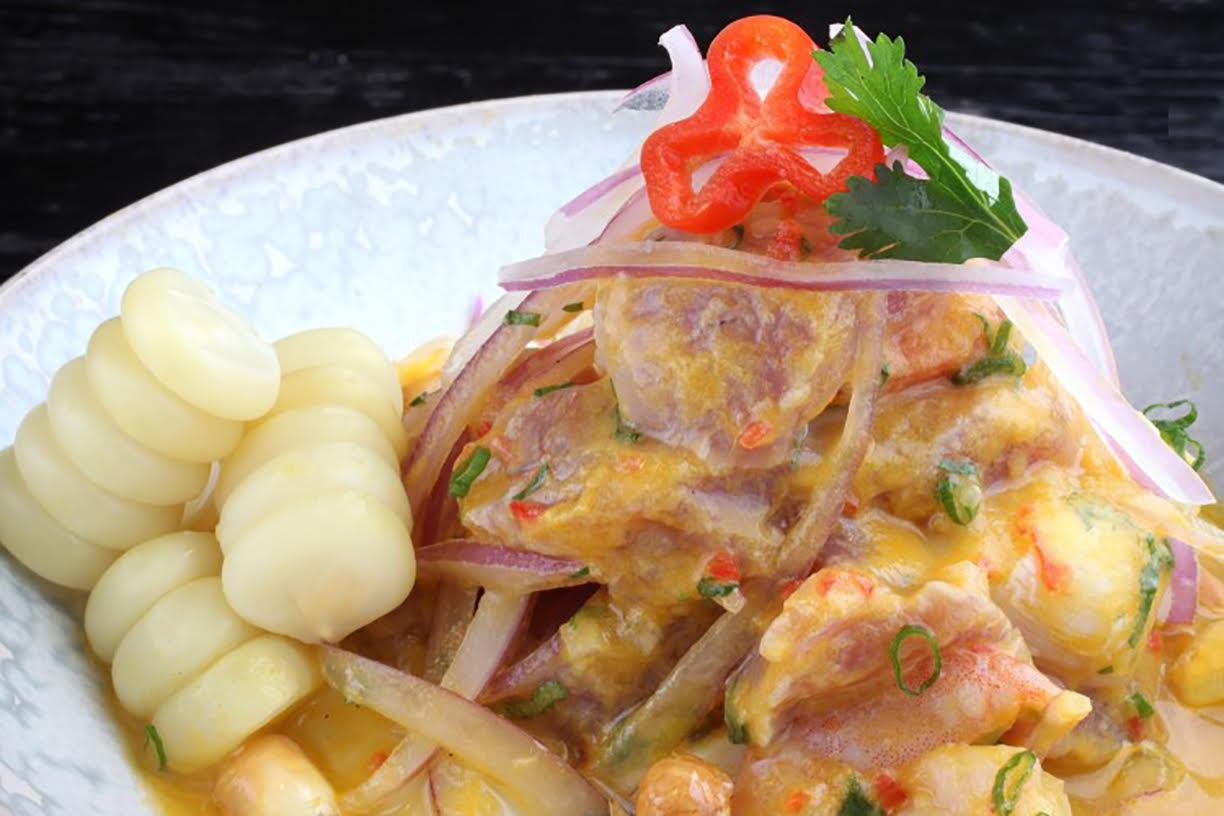
“Dubai is perhaps one of the cities with the greatest gastronomic activity in the world. The best restaurants and the most renowned chefs can be found in Dubai sharing their proposals and concepts with cosmopolitan diners who value and enjoy gastronomy as an activity that unites people and cultures.” — Gastón Acurio.
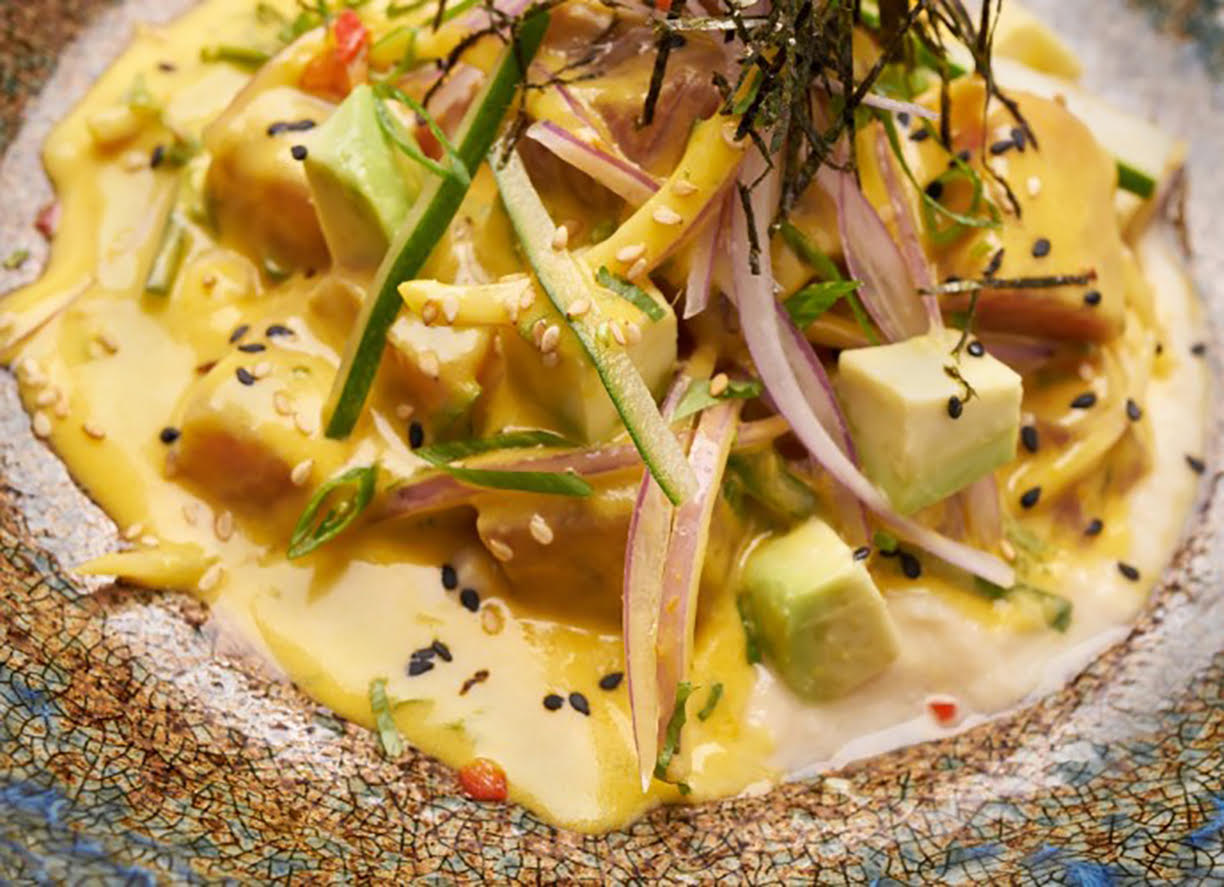
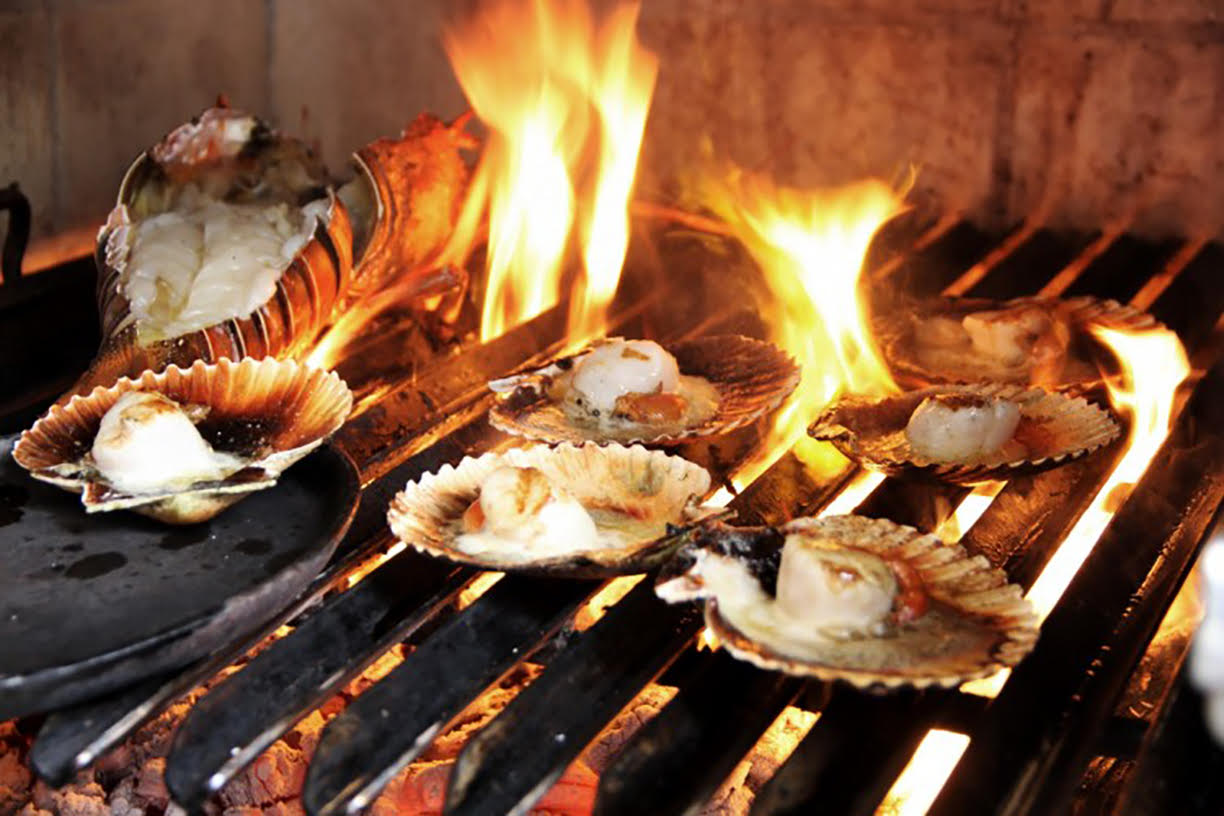
Golf has always been considered an elitist sport, but when precious metals and exotic leathers are introduced, it’s a whole new game.
With its expensive equipment and country club heritage, golf has always been considered a luxury pursuit, even though aggressive youth programs and some hip touring professionals have begun eroding the sport’s buttoned-down image. Nonetheless, players with unlimited resources or a penchant for fantasy are fueling demand for some over-the-top golf equipment and accessories.
The venerable luxury brand of Tiffany & Co. creates some of golf’s most coveted trophies, including those of the PGA Championship and Arnold Palmer Invitational. It also produces an elegant sterling silver putter ($2,500), which is an ideal gift for any golfing enthusiast who likes to flash some bling on the greens. A more discreet way to glamorously accessorize one’s game is with the company’s sterling silver tee, which at $175 is a relatively inexpensive way to give a loved one a little blue box from Tiffany. Hopefully, it will not be lost on the course!
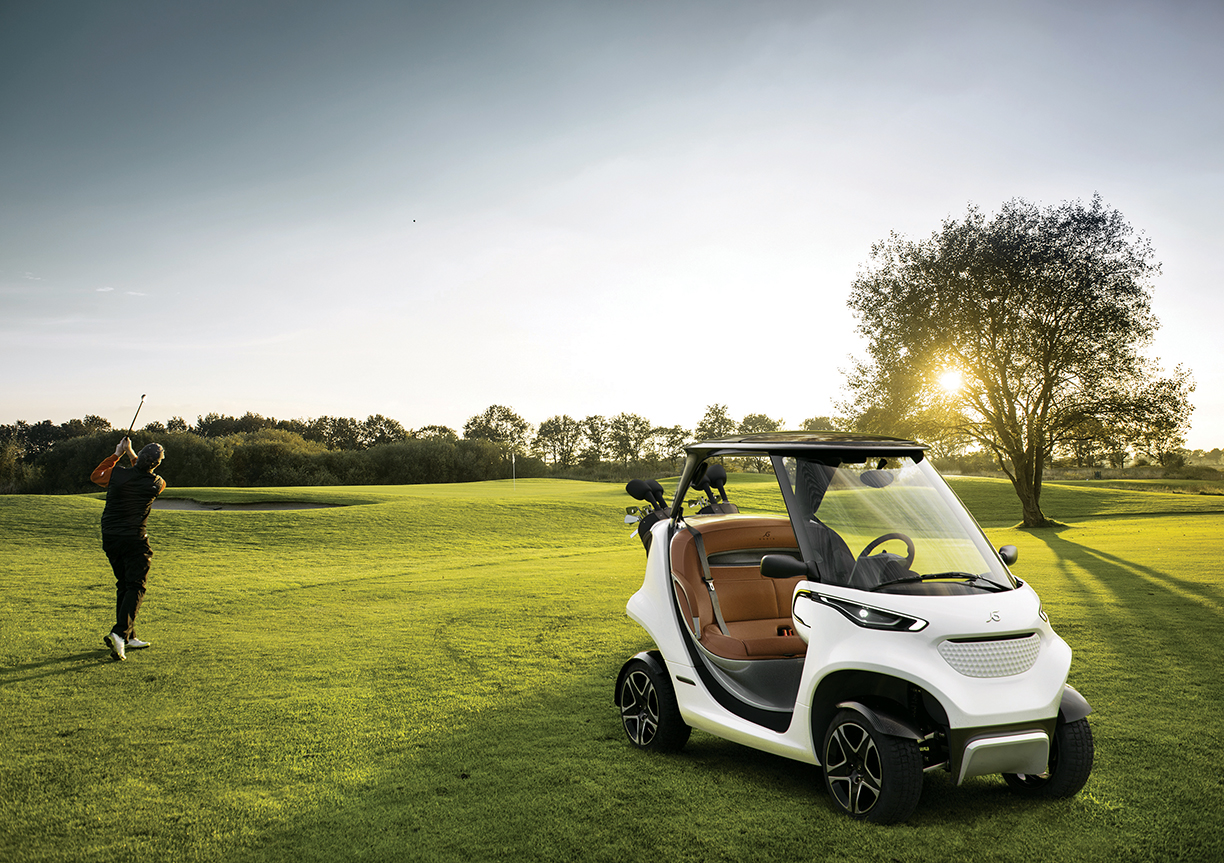
The Garia “Golf Car”
Photo courtesy The Watch Judge
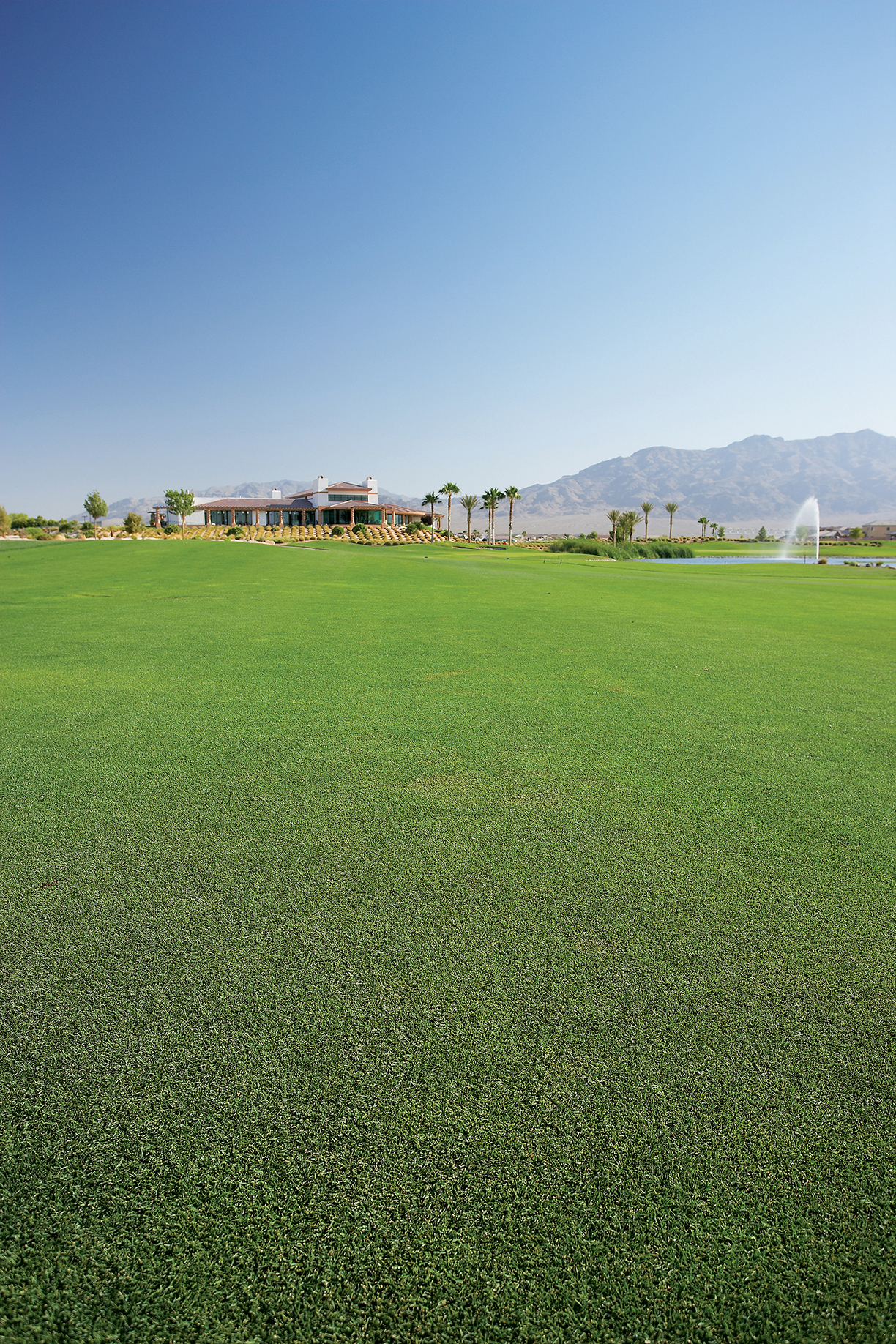
The most expensive regular-production golf clubs are the platinum-and-24-karat gold-accented Beres 5-Star series from Japanese manufacturer Honma. Veteran golf retailer Bill Stauff er of Las Vegas Golf & Tennis Superstore reports that a 14-club set with bag sells for about $65,000 and is popular with status-conscious Asian tourists who would pay more for these products back home. “There’s no question the quality is there,” states Stauffer, who insists Honma products are not simply for bragging rights. He explains the clubs are all made-to-order by seasoned craftsmen, which results in an eight-week wait for delivery. While the brand has traditionally been more popular with billionaire duff ers than PGA pros, superstar Justin Rose just inked a 10-year endorsement deal with Honma.
Transforming the clunky electric golf cart into a sophisticated driving machine is Garia, a Danish manufacturer whose top-of-the-line vehicle begins at $73,000. The Garia “Golf Car,” inspired by Mercedes-Benz, combines luxury, state-of-the-art technology and the true spirit of the game. For functionality, it features a scoreboard displayed on a touchscreen and handy tray for balls and tees, while comfort is ensured by the inclusion of that essential amenity on the golf course — a built-in refrigerator. And with an attainable speed of 43 miles per hour, albeit not recommended at stuffier country clubs, Garia has not overlooked performance. This aerodynamic Mercedes Benz-styled ride puts an end to the plastic buggy age and allows luxury golf enthusiasts to express themselves on the links.
Anders Lynge, designer and co-founder of Garia, explains the inspiration for the product was to take Mercedes-Benz design values onto the golf course, noting the iconic automotive brand has previously applied its sense of style to yachts and helicopters. All Garia golf cars are more than just your average golf cart,” insists Lynge, citing features like sports car-inspired double-wishbone suspension with disc brakes and an integrated instrument cluster. While it offers the functionality and simplicity of a golf cart, the designer maintains it drives more like an automobile.
“Buyers are wealthy individuals who need the car for golf and street usage inside their communities or on their properties,” says Lynge, who reports the car is street legal in both the EU and U.S. “Some are Mercedes collectors, some avid golfers who want the very best, others are athletes or entrepreneurs who have made it and now live in a golf community and want the best possible vehicle for driving and golfing,” says Lynge of his globally diverse clientele.
Par West Custom Golf Shoes is another brand that has gained traction among discriminating golfers. Paul Raddatz founded the business after making his first pair of shoes for PGA pro Payne Stewart — the game’s most flamboyant dresser in the ’80s and ’90s — from NFL football leather.
Currently, three of the top 10 ranked players on the Tour are wearing Par West shoes. The Wisconsin-based company custom-makes all shoes from a foot mold kit, taking into consideration clients’ sock preferences and habits on the course.
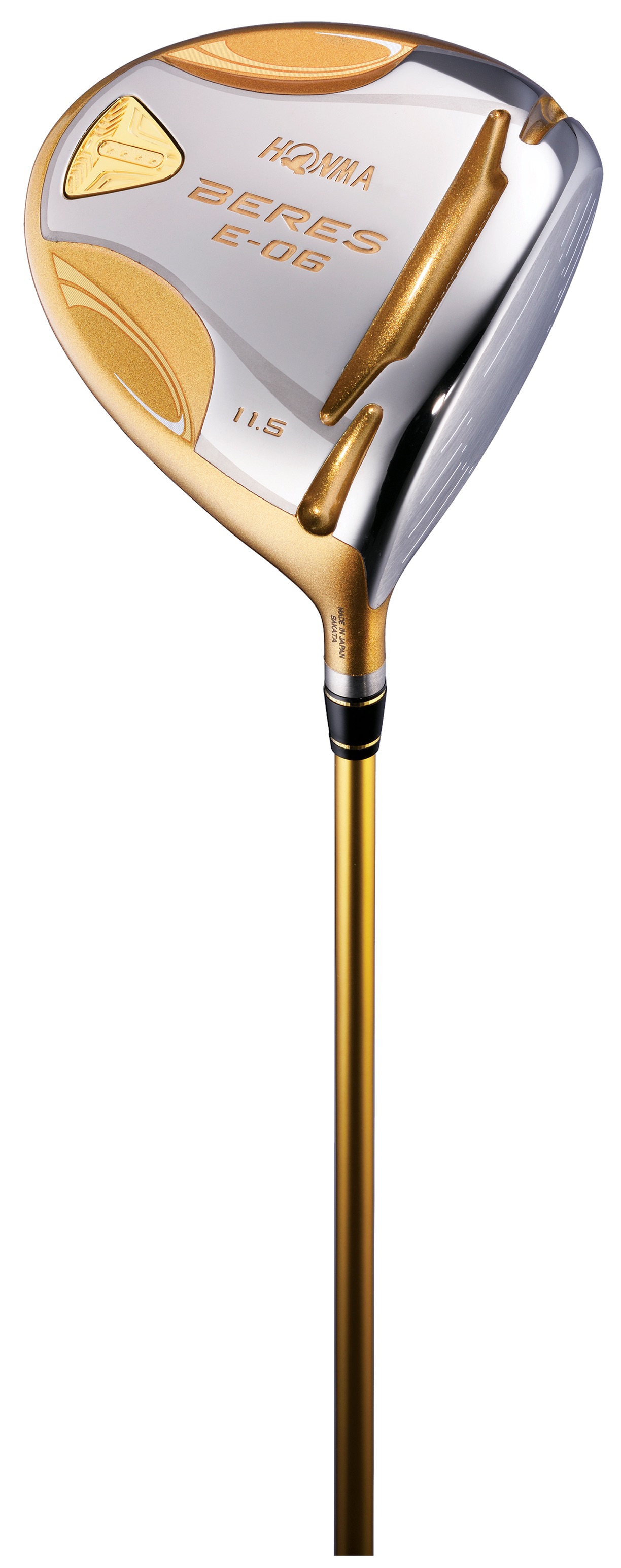
Honma Beres S-06 Driver
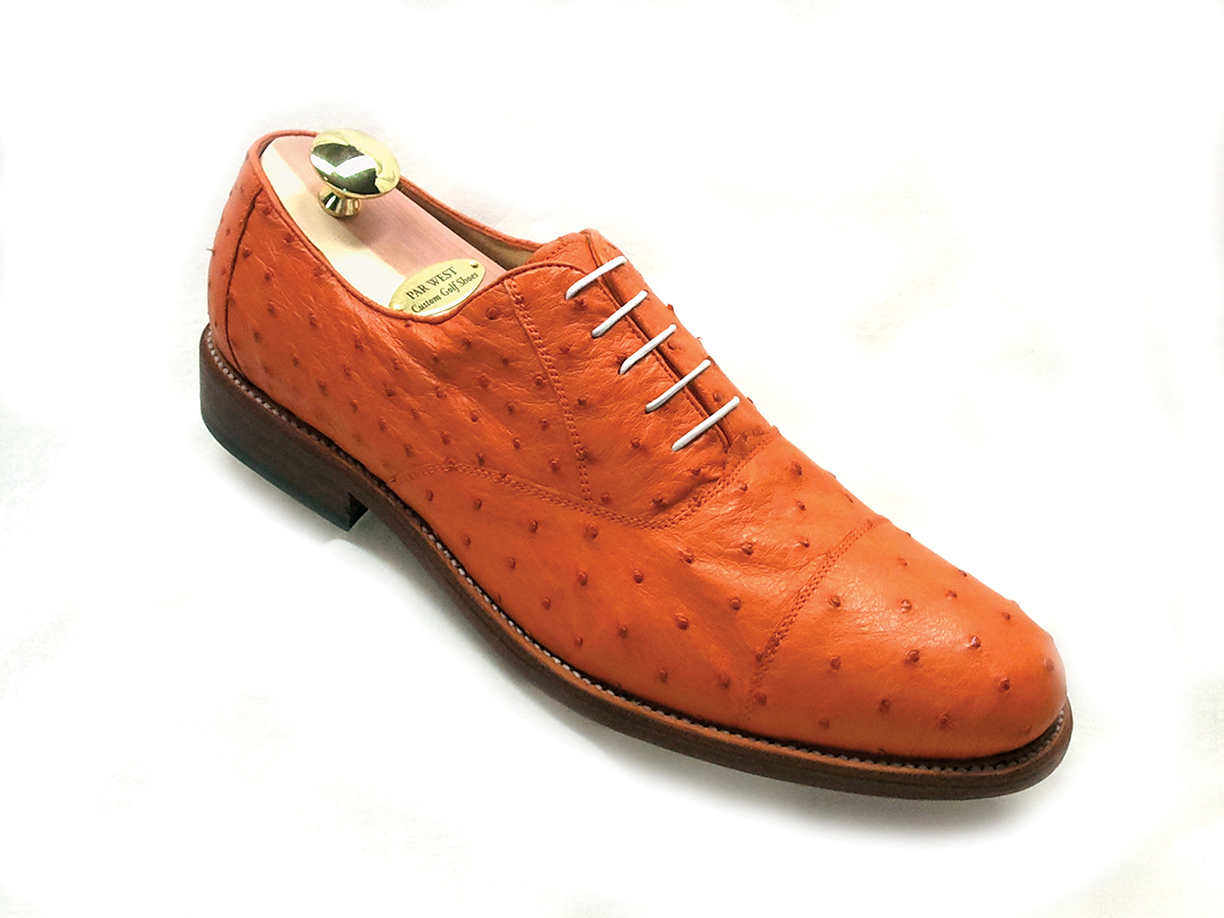
Sterling in Tangerine Ostrich
Reporting he has sold shoes with more than 5,000 distinct color and style combinations, Raddatz says many of his customers are simply unable to find shoes that fit in any pro shop. “Others are people who really want to look their best and care about quality,” he explains. Traditional styles are offered for conservative dressers, but for those more daring in their golf fashion, perhaps influenced by the PGA’s Rickie Fowler, Par West has plenty of eye-popping options to choose from.
Raddatz, a leather industry veteran, utilizes sharkskin, ostrich, American bison, crocodile, African elephant, and stingray for golf shoes, among other exotic leathers. He reports bold color choices like fuchsia, canary yellow or tangerine are surprisingly popular, and a pair of royal purple American alligator shoes is priced at $5,200. An avid golfer himself, Raddatz states, “I don’t care how much you spend on clubs or lessons. Stability on the ground is the basis for a good swing.” A large part of Par West’s business is corporate gifts, ideal for the Fortune 500 executive who fancies himself as the best dressed golfer at his club.
Some fashionable duffers may opt for a vintage Louis Vuitton golf bag, but among the most expensive currently available are ostrich, crocodile or carbon fiber bags from Barchi, handcrafted by Italian artisans. Customers should be prepared to spend more than $40,000 for these luxury bags, available in vibrant colors and accented with palladium hardware.
Considerably more modest but with plenty of cachet is Louis Vuitton’s golf kit clad in the design house’s signature Monogram canvas. The $850 item, which can be clipped to one’s golf bag or Garia cart, neatly holds three balls and four tees. Players with fancy accessories should probably consider membership at a country club that is equally selective, and the most expensive in America is Liberty National Golf Club in New Jersey, where the initiation fee is reportedly $500,000.
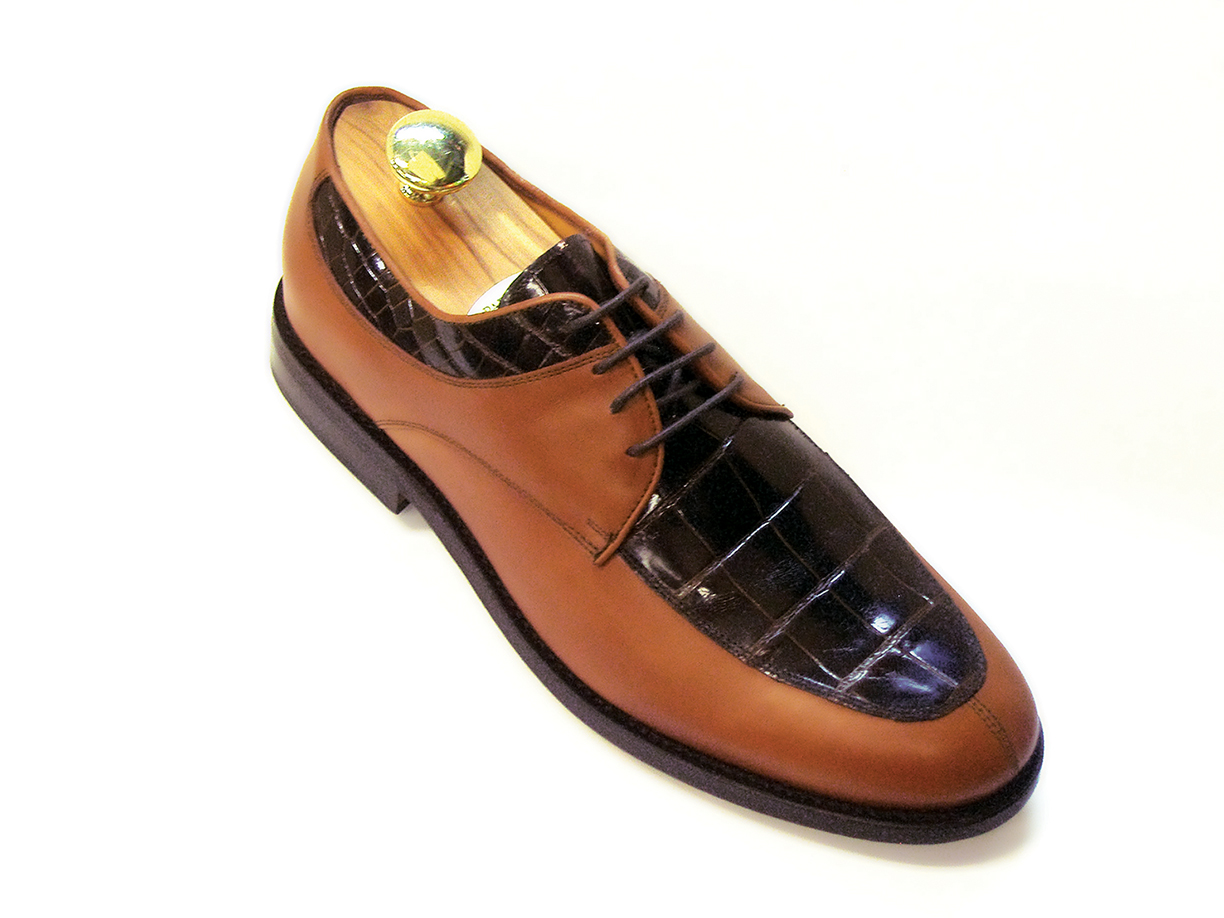
Riviera in Cognac Calf & Chocolate American Alligator
For those looking to travel to Italy this summer, make sure to visit the town of Lecce in the country’s southern Apulia region. Filled with gorgeous cathedrals and historical sites, the city has an “oOld-w World” feel to it — especially now that the Parco delle Mure Urbiche, the city’s ancient walls, have now been restored.
The Italian limestone manufacturing company Pimar recently won first-place for its restoration of Parco delle Mure Urbiche in the city of Lecce during the City Brand & Tourism Landscape Symposium on June 20, 2019.
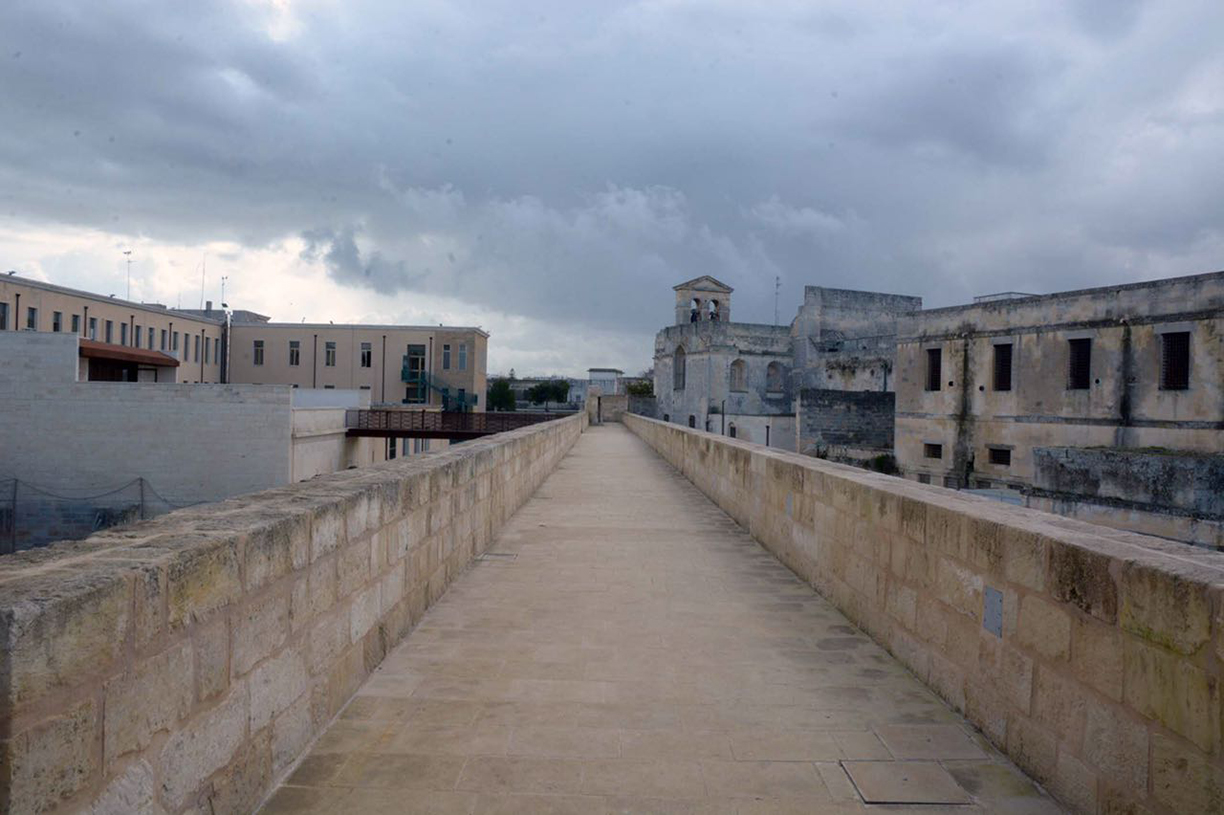
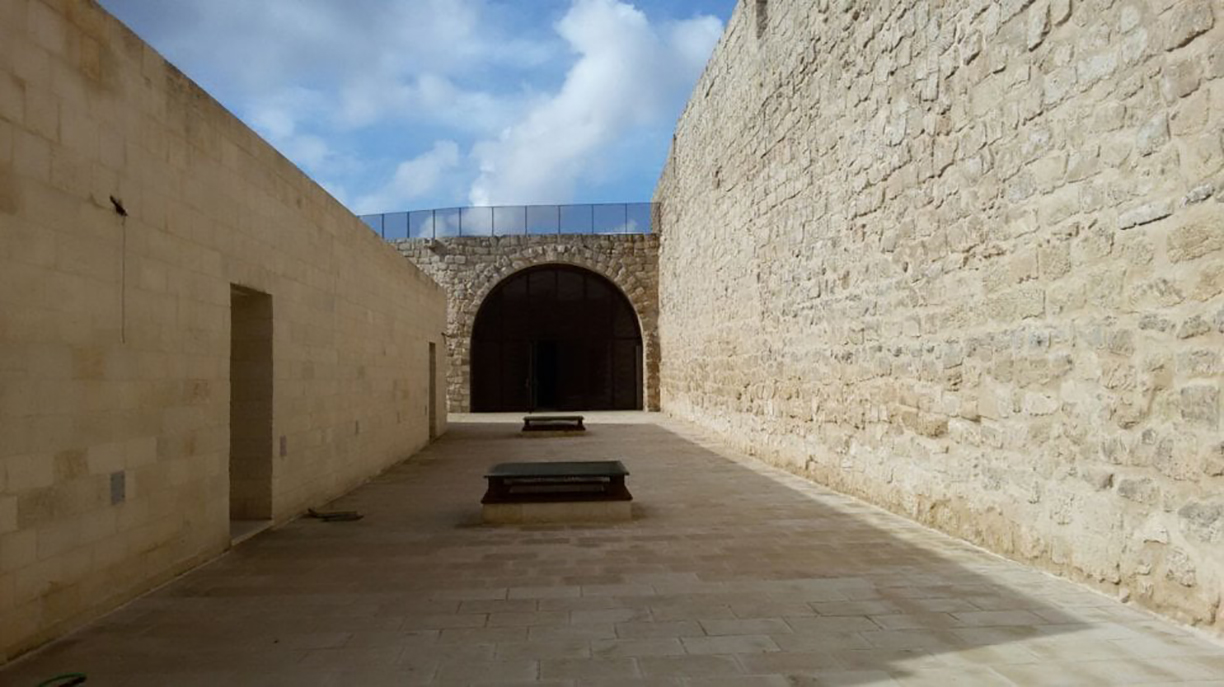
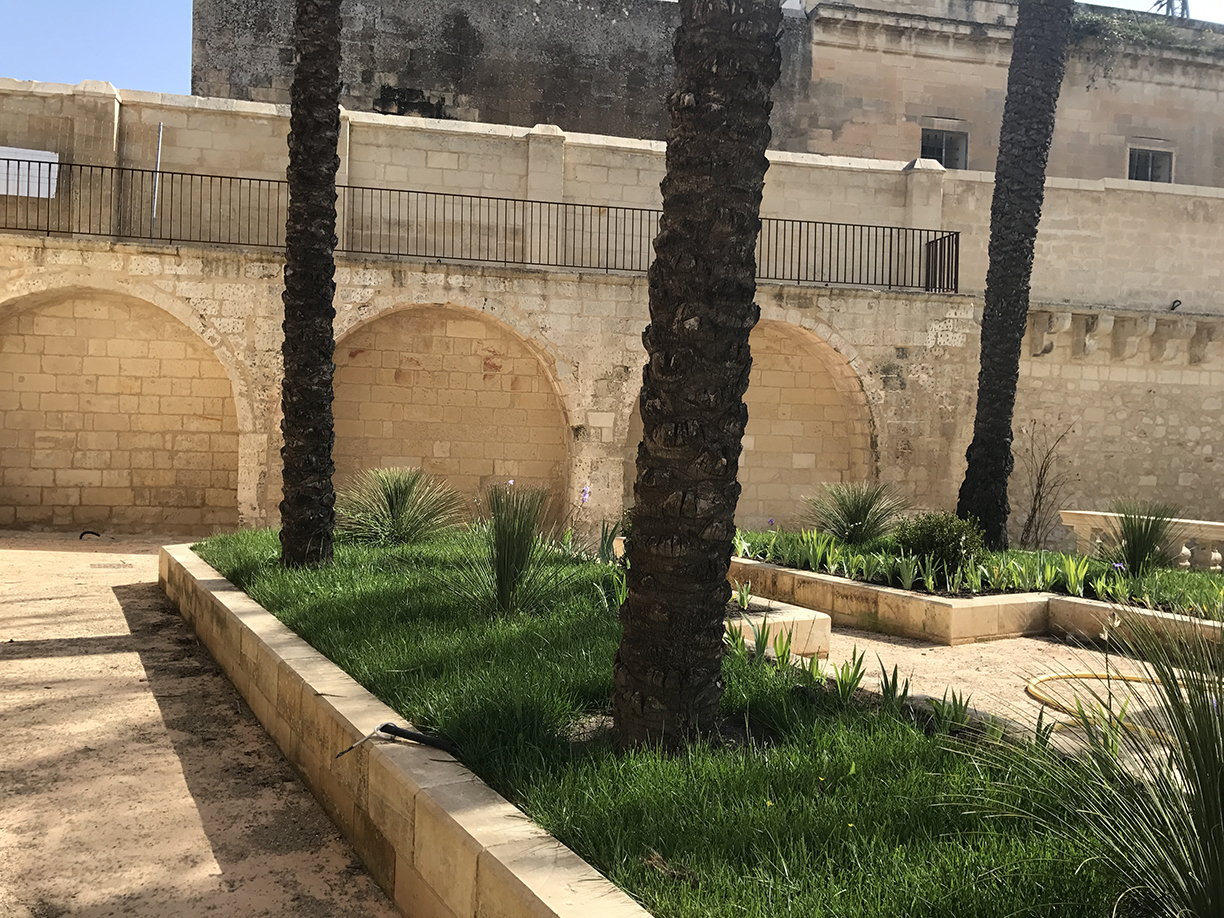
In the restoration of the ancient city walls located in Lecce, Pimar collaborated with architect Patrizia Erroi from the Historic Center Office of the city of Lecce. Both aimed to enhance the value of an archaeological area in a harmonious relationship with the landscape, while making it fully accessible to the public.
The international design recognition is promoted by the National Board of Architects, Planners, Landscape Architects and Conservation Architect and International Magazine PAYSAGE TOPSCAPE, in collaboration with the Milan Triennial, which hosted the inauguration ceremony its Hall of Honour.
Within the framework of the rehabilitation of urban space, Pimar stood out for being a “well thought-out requalification project focusing on the restoration of the historic city walls, which unveiled an unprecedented scenery in Lecce.”
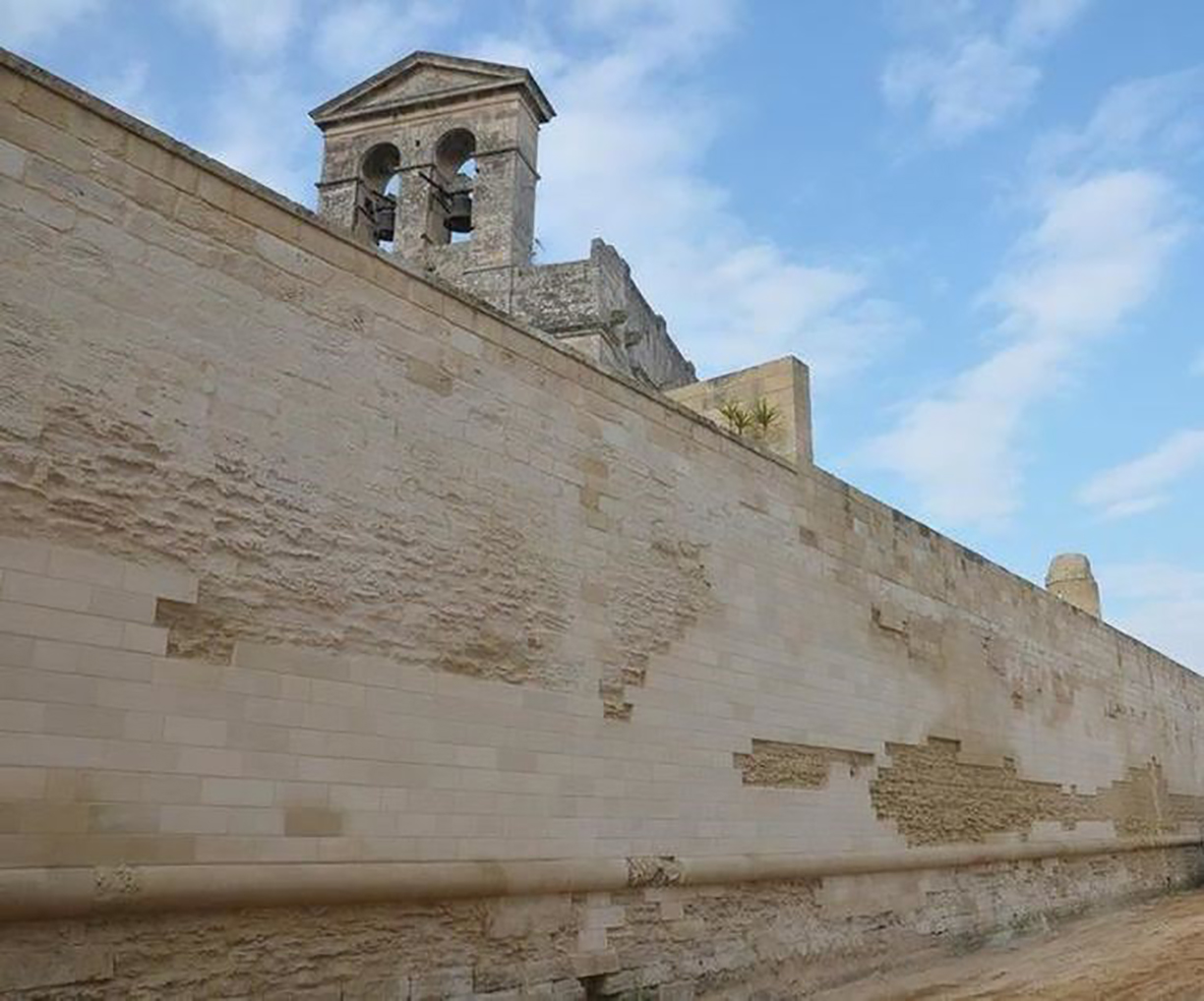
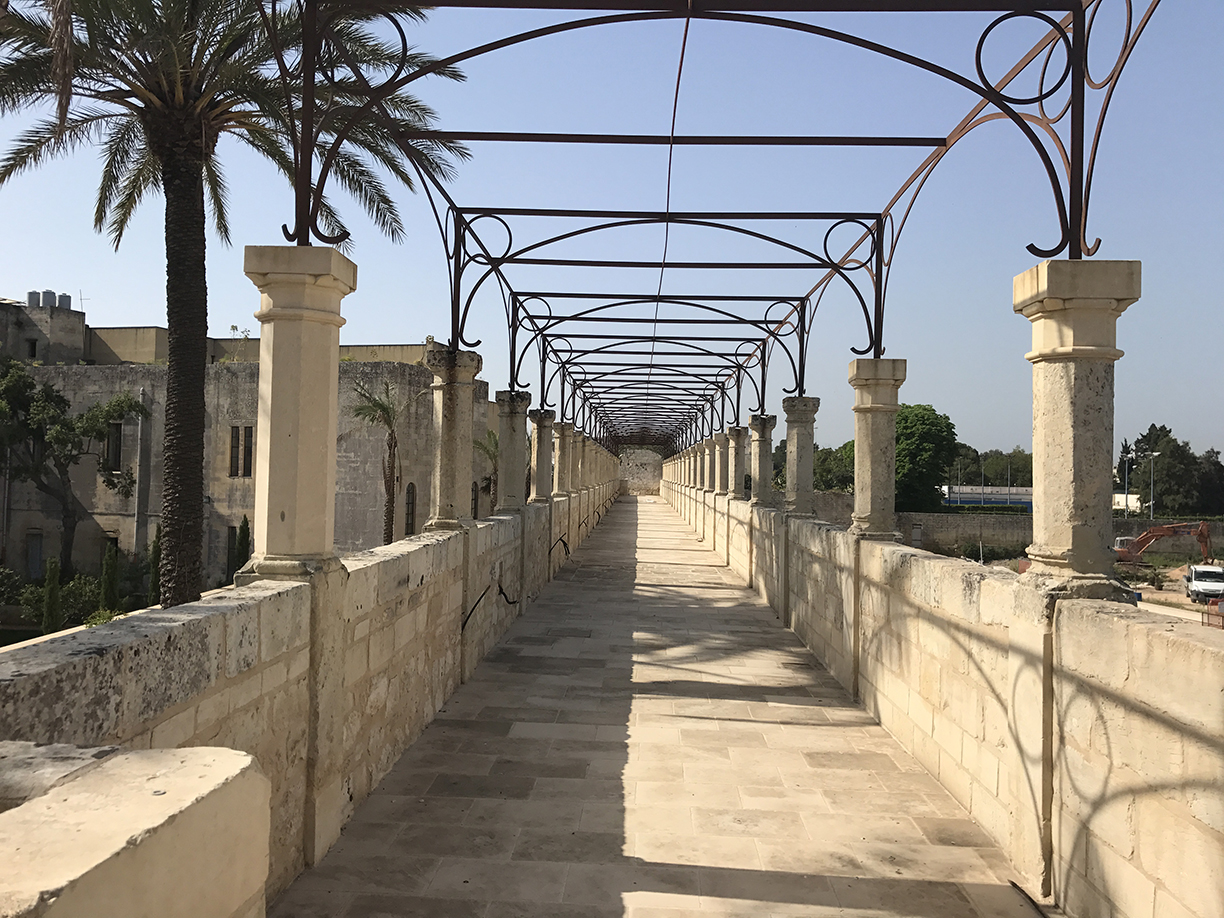
The restoration of the Mura Urbiche made exclusive use of Pimar natural stone. Thanks to the restoration works, the walls are now perceived — together with the moat and the rock outcropping unearthed by the archaeological dig — as a single stone landscape having intrinsic figurative and formal qualities. The restoration work performed on the 16th century fortress also brought to light a Roman road, dating to between the 2nd and the 3rd century BC, which continued to be used until the 16th century.
The detailed and laborious process granted Pimar the first-place award at the symposium. With this recognition, the association reasserted its commitment to the promotion and development of landscape architecture on the occasion of the 100th anniversary of the foundation of the first course of studies in Landscape Architecture.
